Pro tips:
- Bolivia makes US citizens get a visa so be prepared. Everything online about US citizens getting visas made it seem complicated but it ended up not being too big of a deal. I had to stand in a different line and literally got a physical visa printed and put into my passport. It looks 20 min (but there was no one else in line at the Santa Cruz airport). They only asked me for my first accommodation and my proof of onward travel. I paid the (exorbitant) $160 visa fee by credit card (but 2 of my 3 credit cards were declined so bring crisp USD as a backup) and then I was stamped into the country. Please be prepared with the list of items that they list as requirements on official govt websites, but just know I expereinced a very smooth, relatively quick process that was very less intense than I was prepared for.
- Be prepared for the altitude. The elevation is this country is no joke, so take excessive precautions with either building in rest days for when you arrive to acclimatize or bring medication with you. Some people are fine, but most feel some effects. I felt like I was hungover for 3 days when I arrived and was very happy that I was planning to stay over a week here so I had no rush to get things done.
- Bring USD to exchange. This is by far the best way to get local currency. As of Oct 2024, officially exchange rates were $1 USD = 7 Bolivianos, but on the main street, there were people offering up to 10.5 Bolivianos for $1 USD, which means I got a 50% better rate using my USD vs taking money from an ATM. Don’t be fooled by people offering a 10% discount if you use cash to pay for things, go straight to the local folks exchanging on the street as you’ll get a way better rate. Folks did warn about counterfeit money being exchanged, but I exchanged money 8-10 times and never once had an issue. One trick is to exchange $20 (you’ll get the best rate by exchanging $100 bills FYI) and then testing it by buying breakfast to ensure it’s legitimate. Then you can go back to the same person and exchange more.
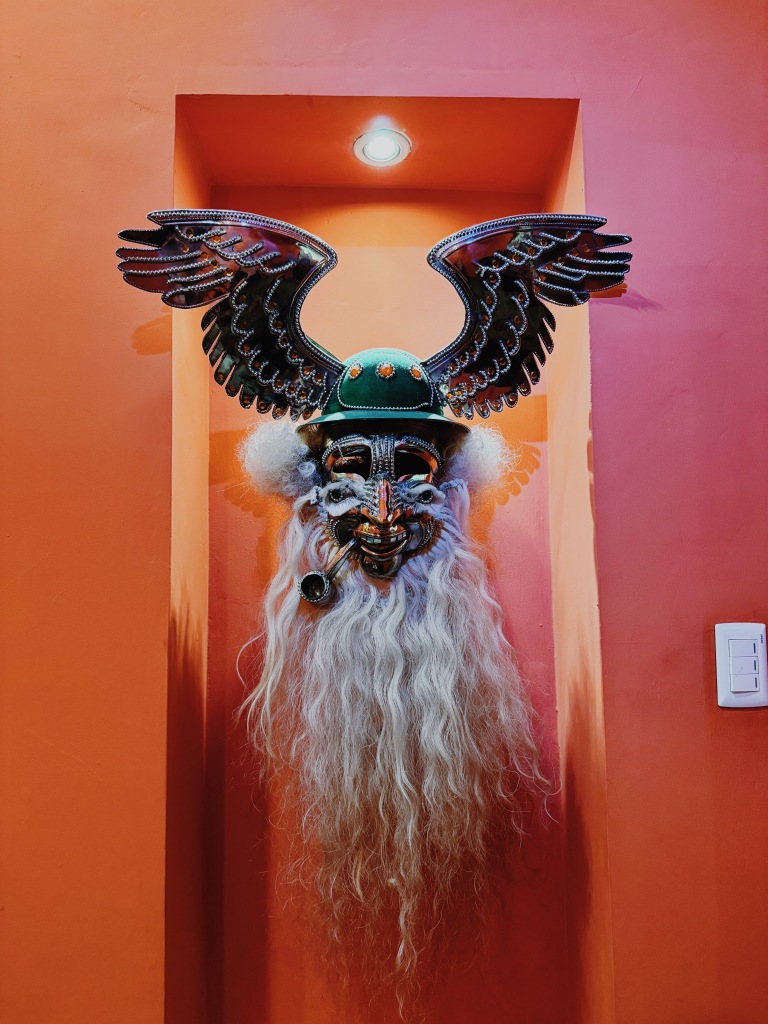
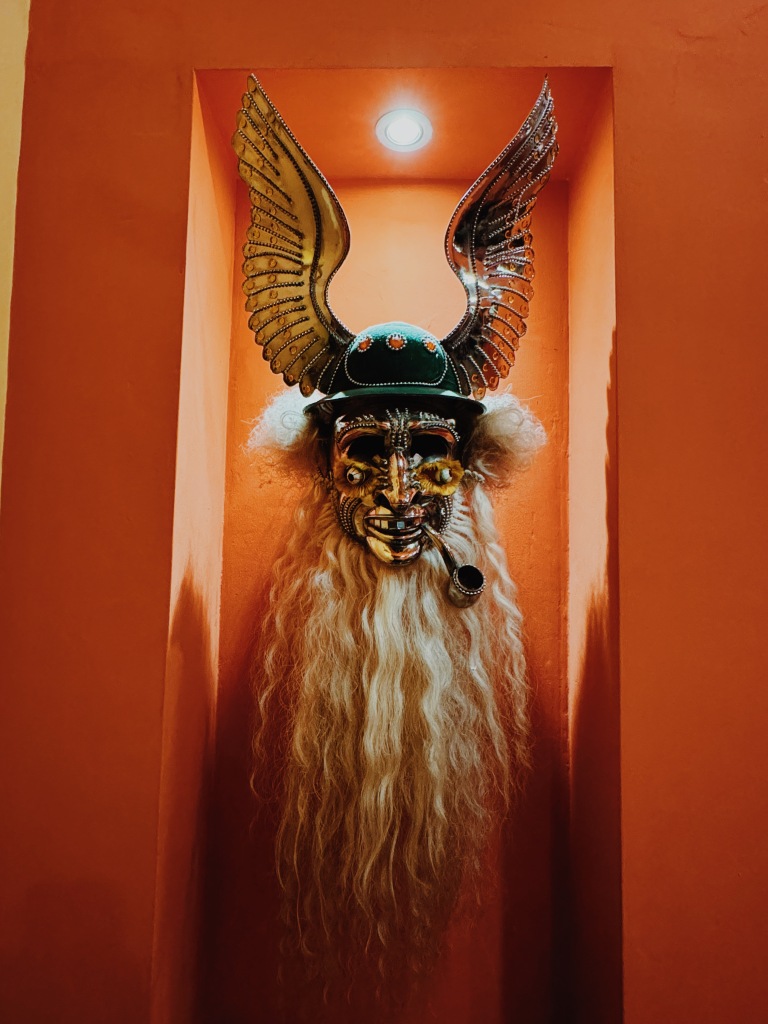
CITY: La Paz
HOW LONG: 9 NIGHTS
Side note: My friend, Sonja & I reunited in La Paz to begin our 2 month South America adventure together! A quick reminder: we met in a hostel in Thailand 8 months ago (Jan 2024) and realized we are both doing big around the world trips and coincidentally would be overlapping a few times throughout 2024. We began with a reunion in Laos in February, and then a meetup in Japan in March, where she met my cousin and Dad! Next up Sonja did a 3 month camper van trip around the US, Canada, & Alaska so I convinced her to come visit me in Lake Tahoe since I spent the summer there. Our final meetup is our most exciting: 2 months in South America through Bolivia, Chile, Argentina and ANTARCTICA!!
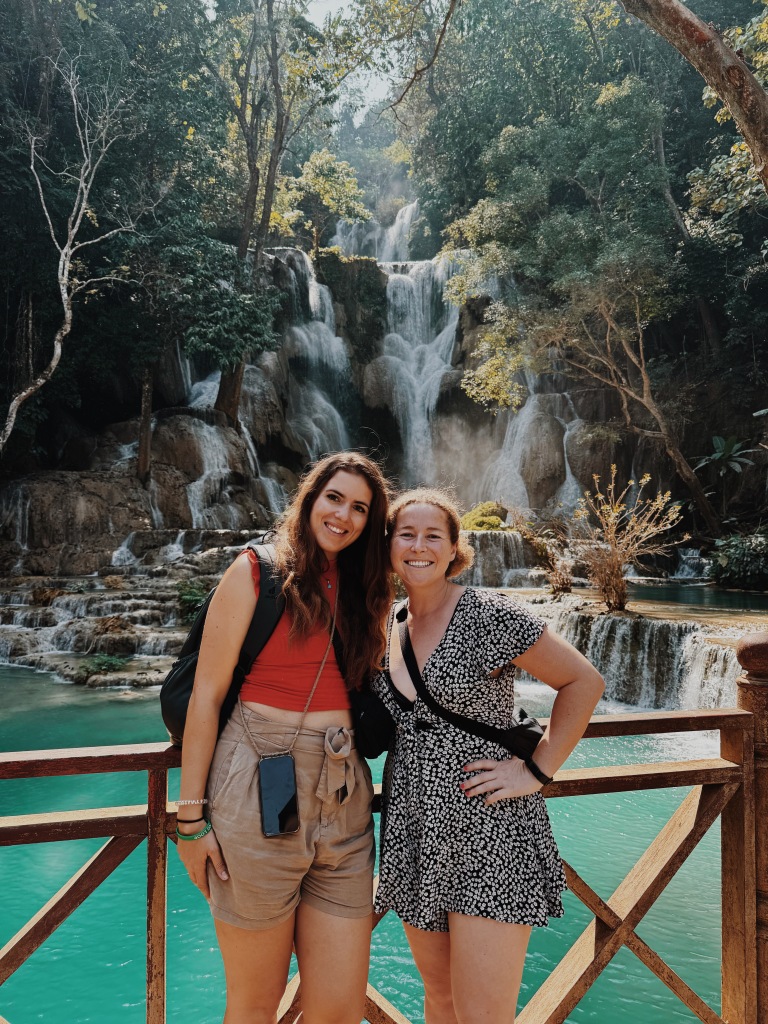
Accommodation:
I stayed at Wild Rover La Paz, an Irish owned hostel in the heart of La Paz. It’s definitely a party hostel, but we actually didn’t mind it. There were tons of other backpackers and it was easy to make friends. We requested a room away from the bar so noise wasn’t an issue. There are shared coed bathrooms as a heads up, but it was fine for us. The beds were very comfy & had curtains and personal plugs. They were built in bunk beds so no wobbly movements when your bunkmate gets into bed!
The location was great as it’s close to a supermarket, some cute restaurants and the gondolas. The cute walking street filled with tons of restaurants was only a 15 min away.
Where to Eat:
Well Sonja and I are obsessed with breakfast food & a cute cafe (you can see why we travel well with each other!) so we became creatures of habit and ate at the same 4 places over and over again 🙂
- Cafe del Mundo – this is a staple backpacker spot with breakfast all day and plenty of other great options as menu items range from all around the world. It was started by a Swedish backpacker who fell in love with La Paz and started the cafe. Each room is decorated/inspired by a different continent (and her travels there).
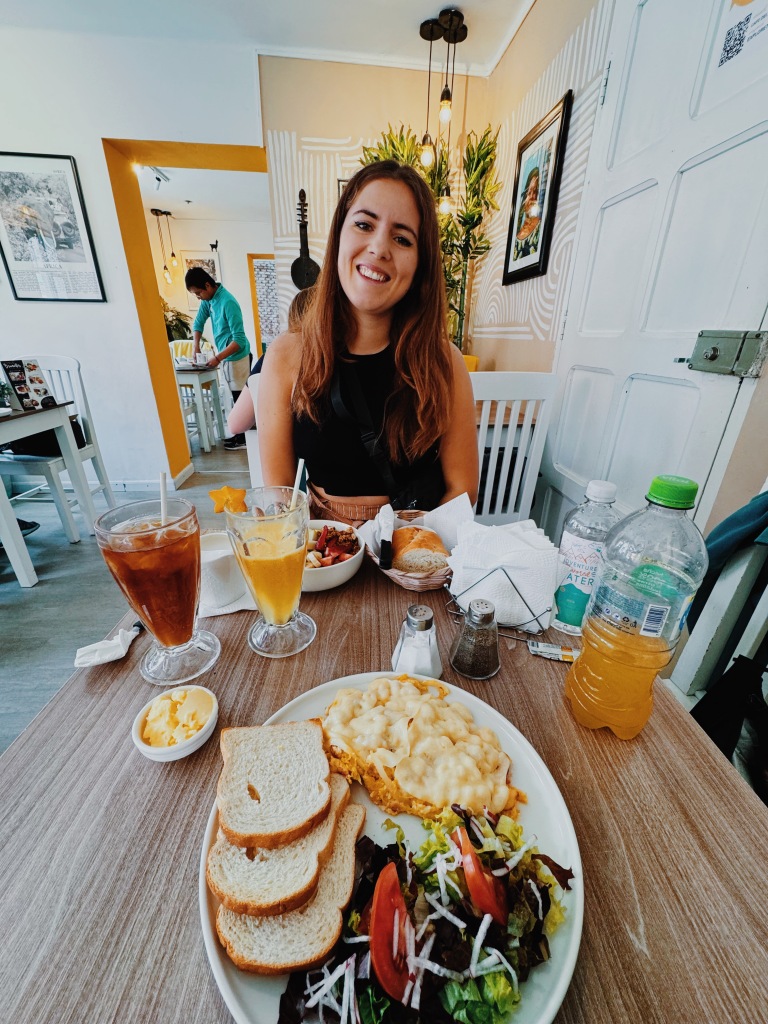
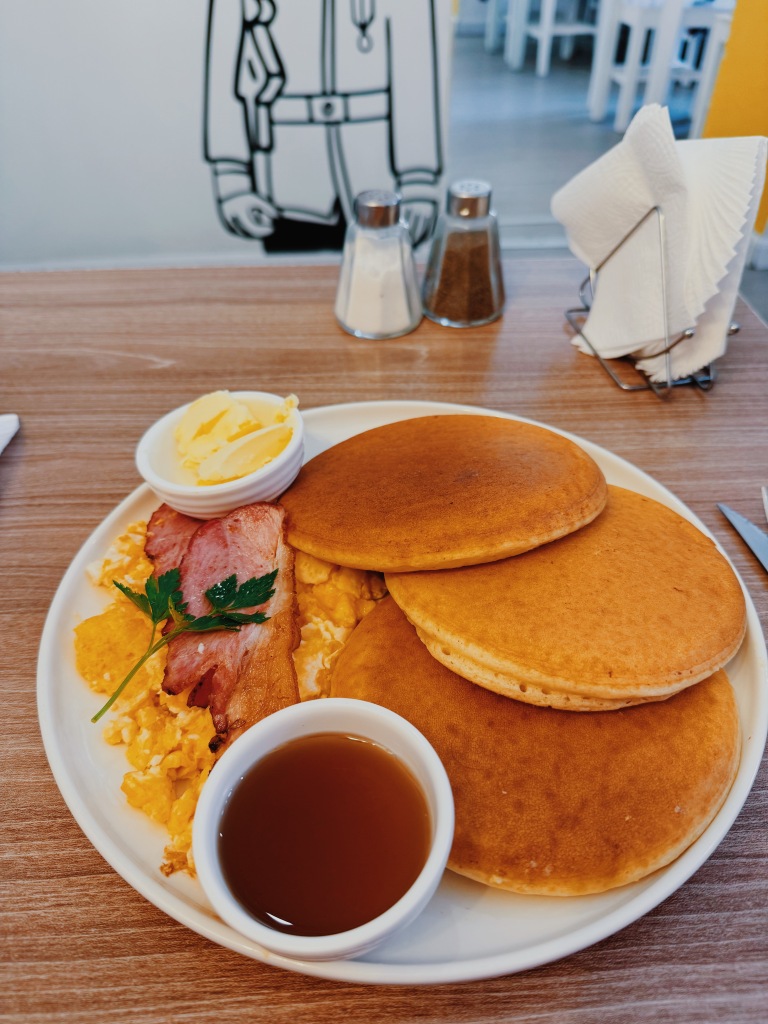
- Devotos Typica – This is two blocks from the hostel and quickly became a favorite. Great coffee (according to Sonja) & their few breakfast menu offerings deliver. I loved their breakfast plate that included toast, scrambled eggs, bacon, croissant and hot drink. All for ~$3.5usd. Unreal! Also I became obsessed with their croissants. I felt like I was in France.
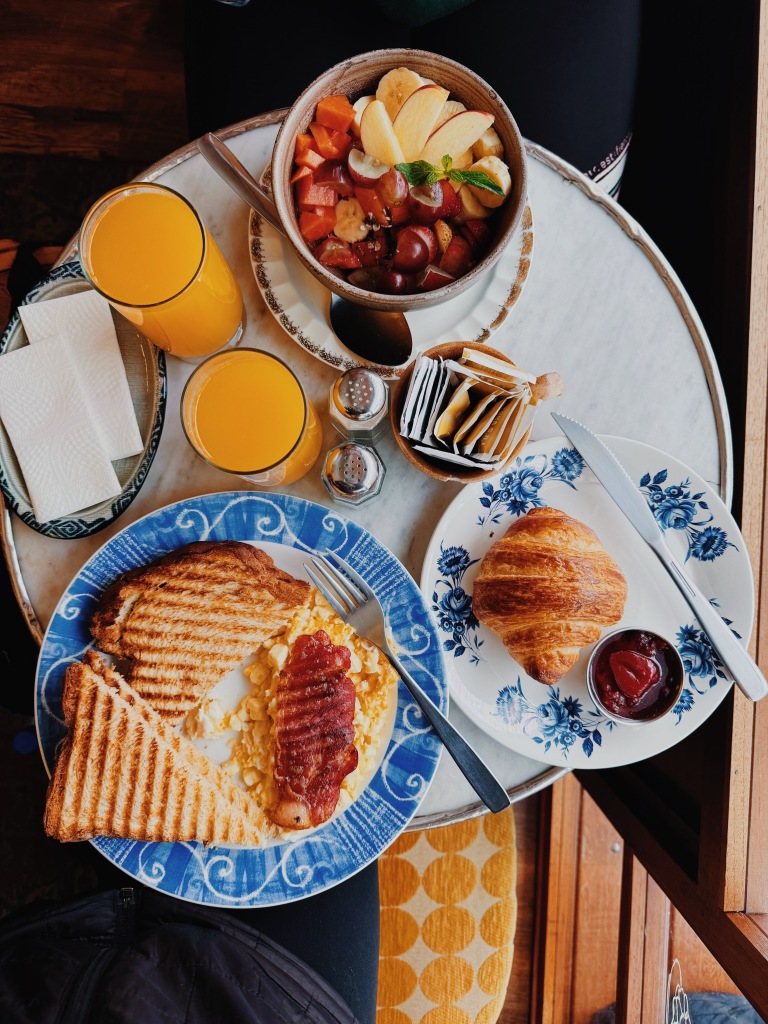
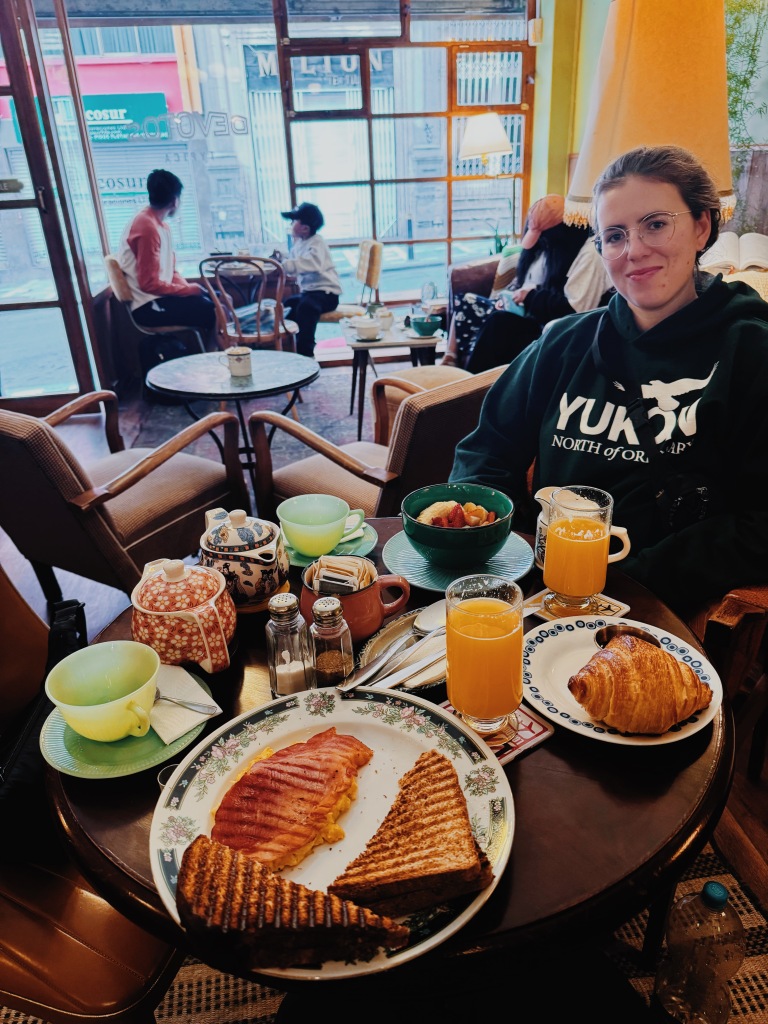
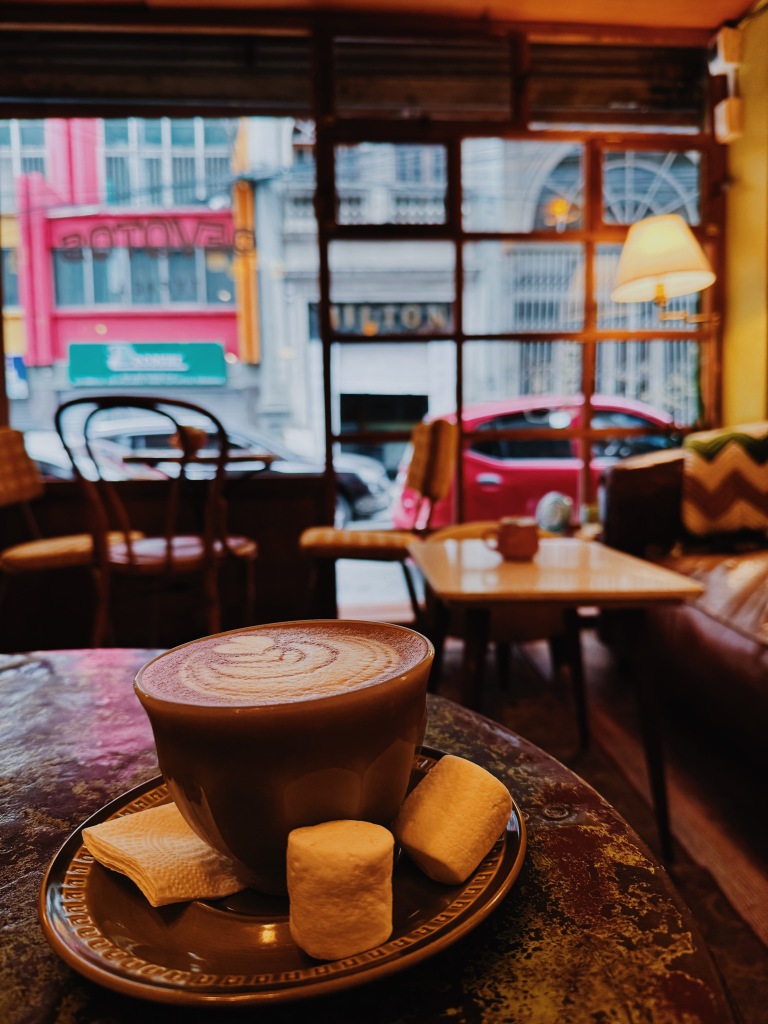
- La Grosería – This is across the way from Cafe Del Mundo and we ate here just as often. Located on the second floor, their balcony tables offered a romantic view down the street of La Paz. They had an expansive menu and also breakfast all day. They had an incredible assortment of fancy, extravagant milkshake options, with some including brownies or donuts on top haha.
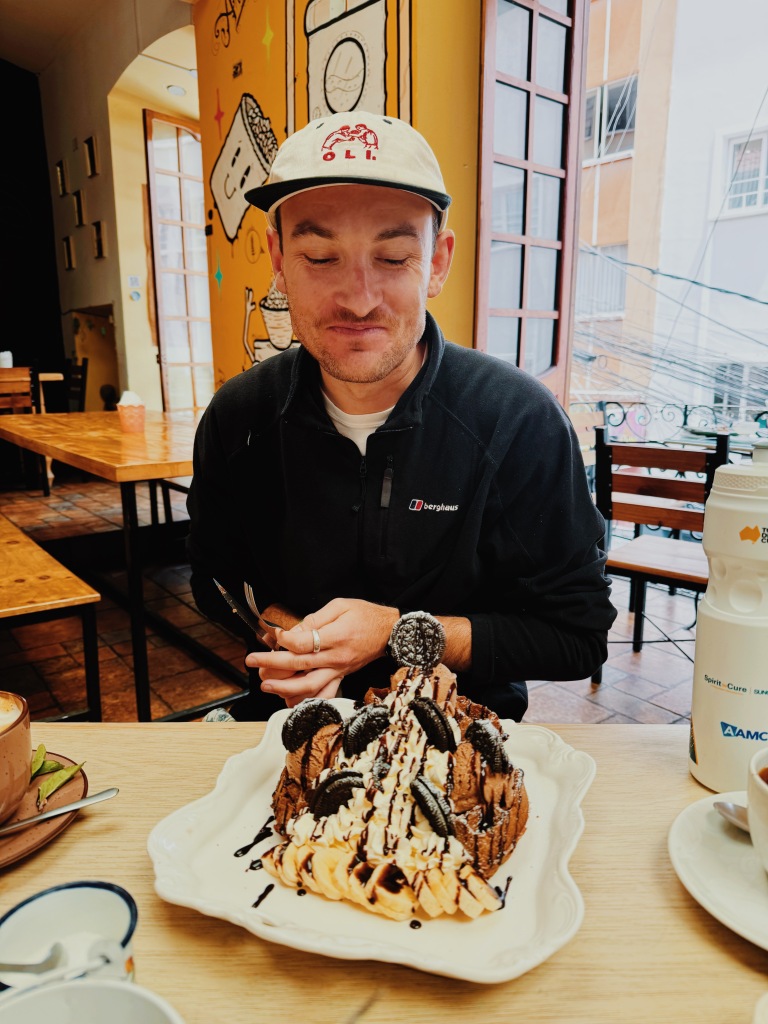
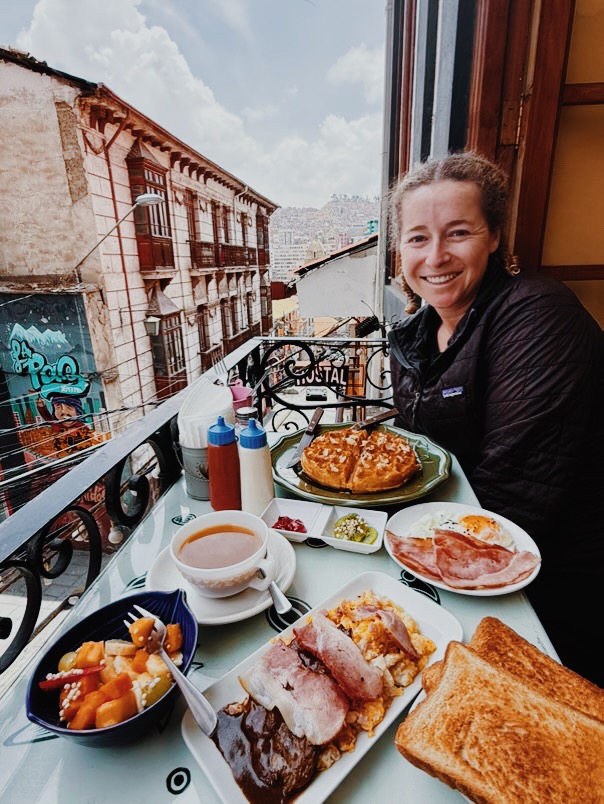

- Café Restaurante Bañáis – we actually never ate anything here, but came here almost daily in the afternoon to enjoy a hot coca tea (to help with the altitude) and play some cards or do some admin. The cafe is lovely and we generally found it to be quiet. The service was excellent. If you need some down time to just be still in a tranquil environment with a hot drink, this is the place to be. Wifi was decent as well.
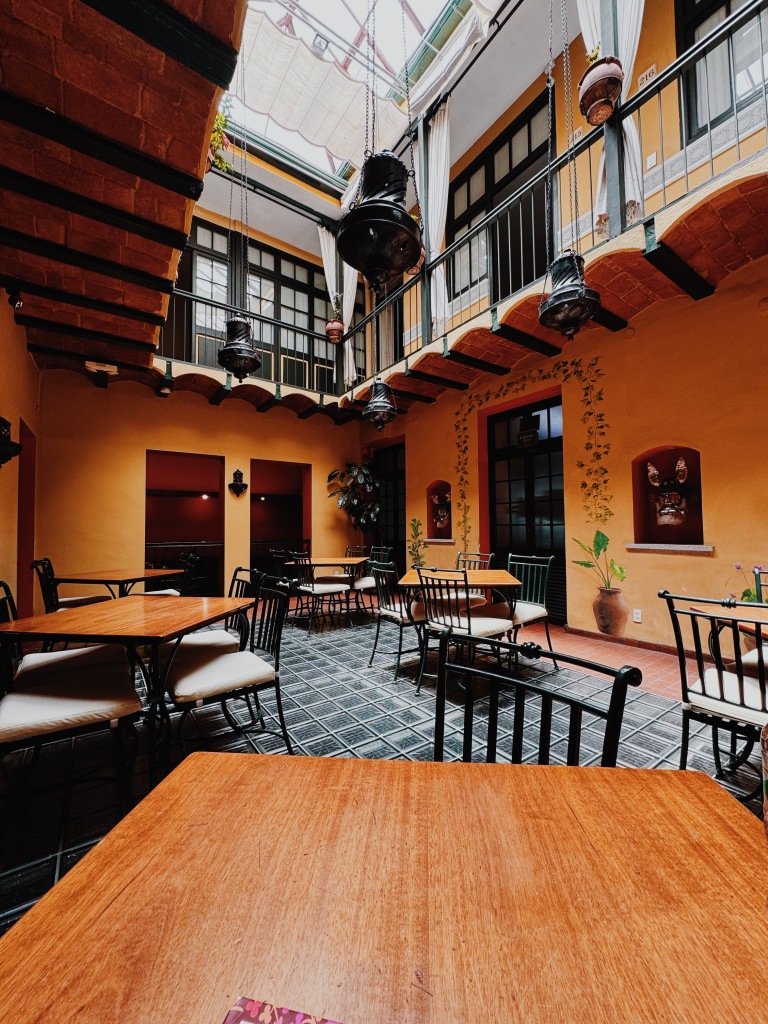

What to Do:
There is a TON to do in La Paz. There are mountains to climb, cable cars to traverse, Death Roads to bike down, & rock landscapes to check out. Walk into any agency (there are hundreds) and they will happily tell you what all your options are. Pro tip: Ask for a discount if you book a few tours through one agency, and don’t book through your accommodation as it will always be more expensive. Wild Rover offered tours that were 50-100% more expensive than the agency down the street
We spent a lot of time acclimatizing to the elevation (don’t underestimate the effects), but we enjoyed conquering the Death Road. The Death Road near La Paz in Bolivia is one gigantic winding snake of a road (specifically ~69 km/40 miles long) named Yungas Road. It was built in the 1930’s to connect the Amazonian jungle to La Paz. Before it was shut to cars, around 300 people died annually driving the road, thus its name as Death Road. At one point you can look down and see a bus that is still visible half way down the cliff. Very sad to see the remnants of all that the Death Road has taken from Bolivian families. At times, it’s only about 3 meters wide, and protective barriers are nonexistent. With the rain, fog, and landscapes, it is easy to see how it lives up to its name. Now, the only use is for tourists to mountain bike down as a group (and while there’s far fewer deaths for bikers than drivers, people do still die on this road so take precautions). You start at 15,230 ft (4600 m) and end at around 3870ft (1200m). This is like going from the base of Breckenridge Ski Resort all the way down to sea level & then add 2000 more feet. We had a blast, but it was definitely hard biking down steep gravel. I heard from lots of backpackers that we met that either they themselves or others on their group had fallen and gotten hurt. Luckily neither of us fell, and no one from our group fell either. I biked very, very slowly haha. I did not want to injure myself before our trip to Patagonia or Antarctica! It was wild going from the chilly, barren mountain tops all the way down to the hot and humid jungle in one day. It also definitely took a toll on our body – neither of us felt 100% the next day due to the extreme changes in elevation we put our body through. I’d still recommend it though!
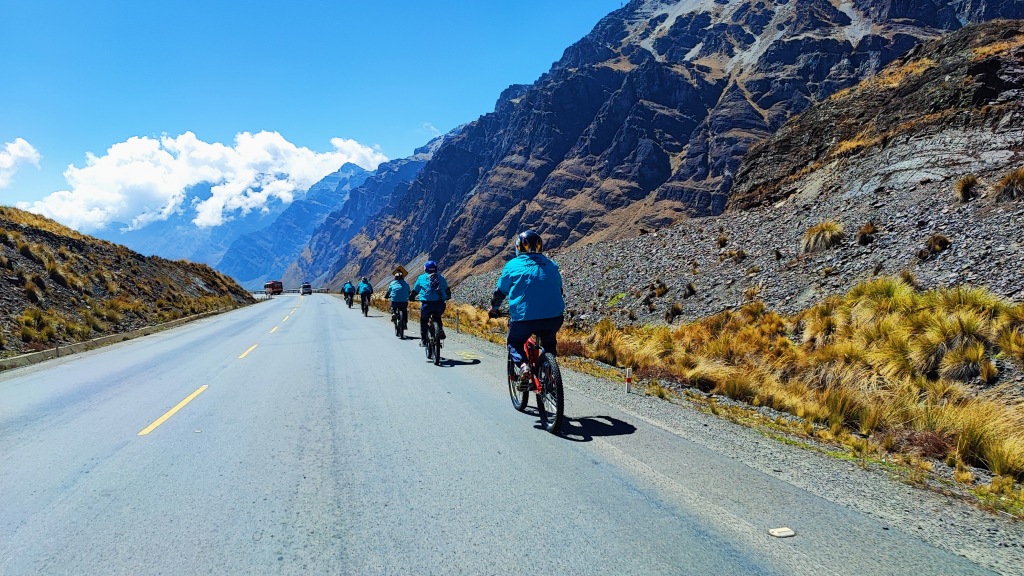
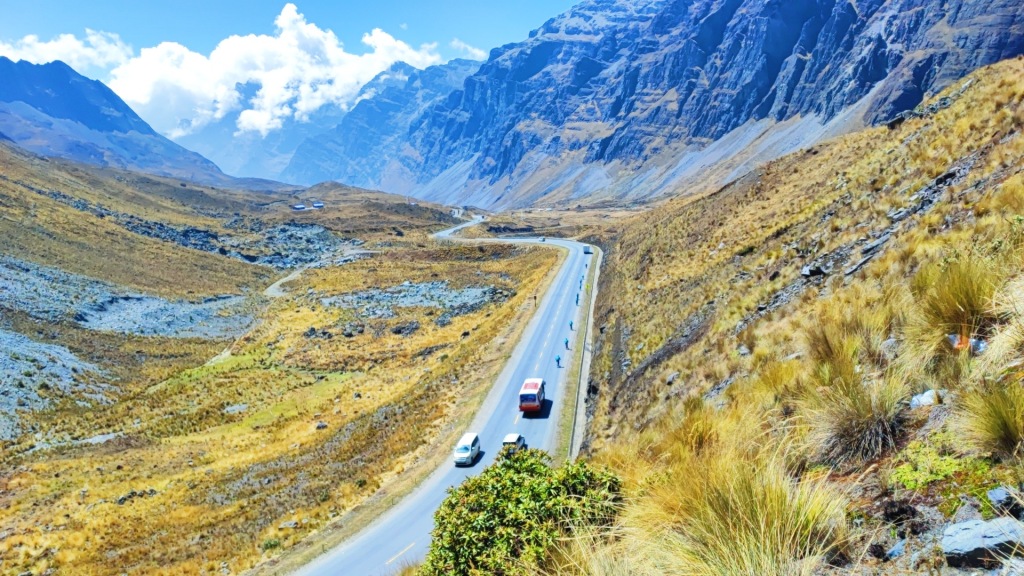
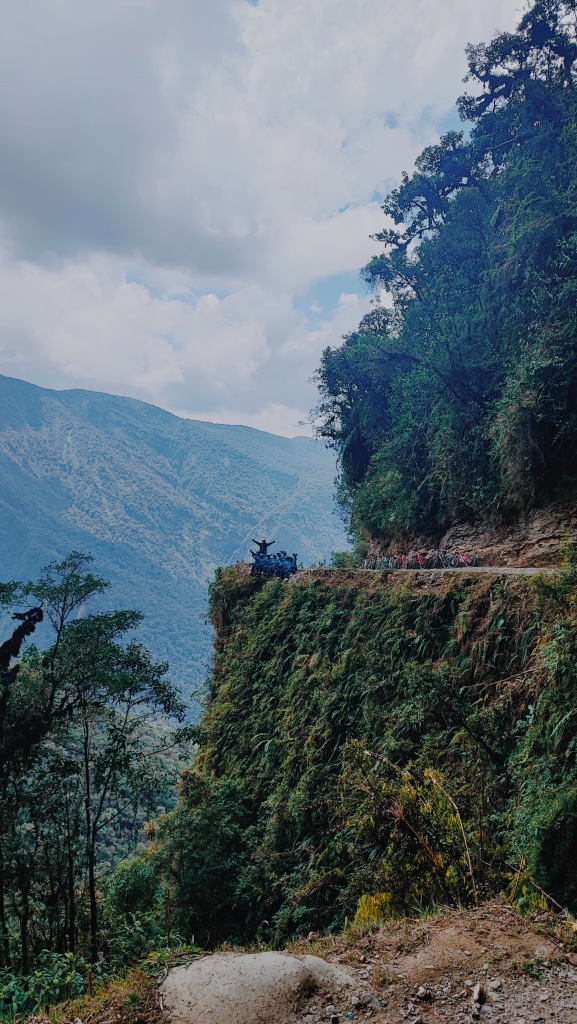
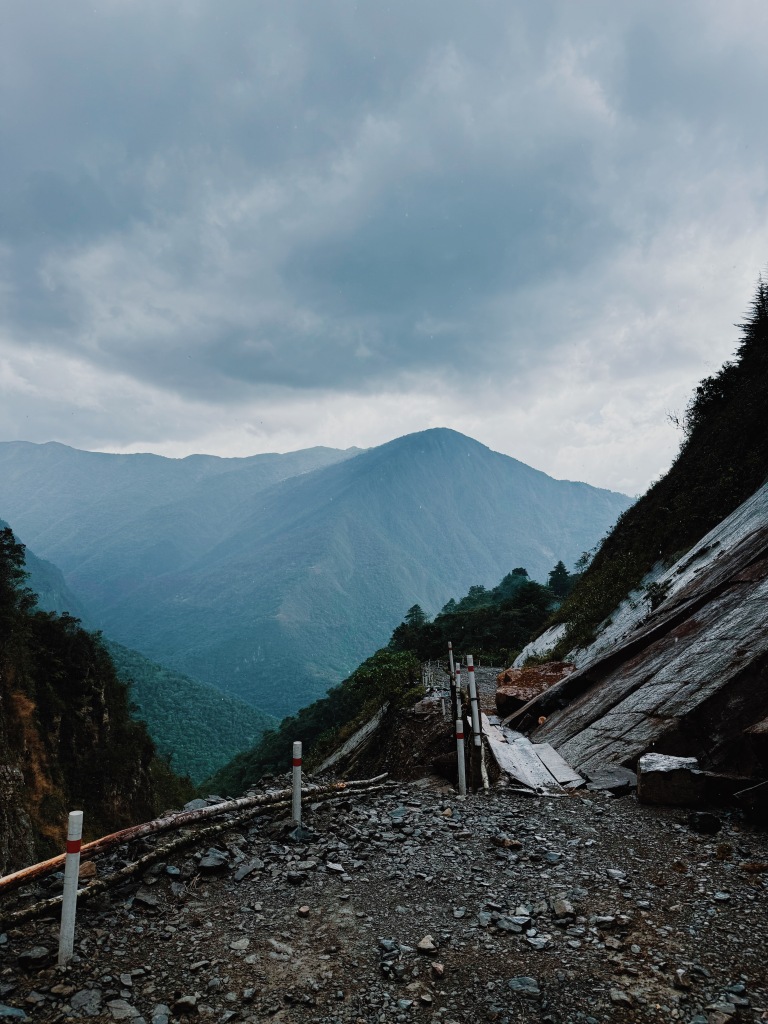
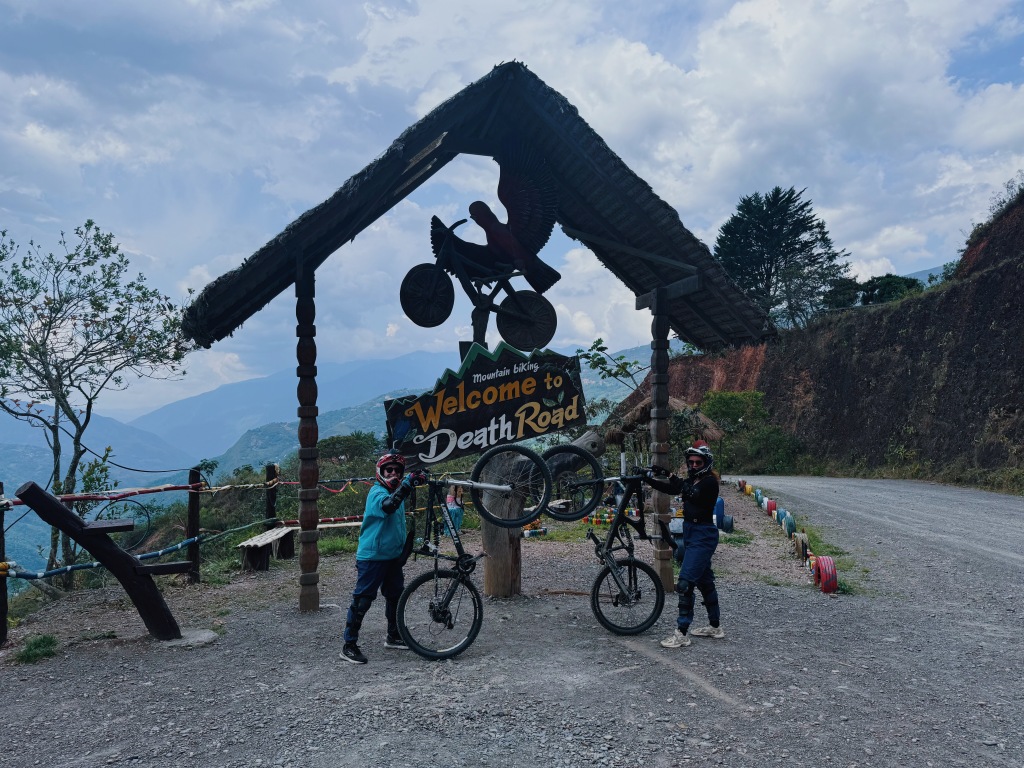
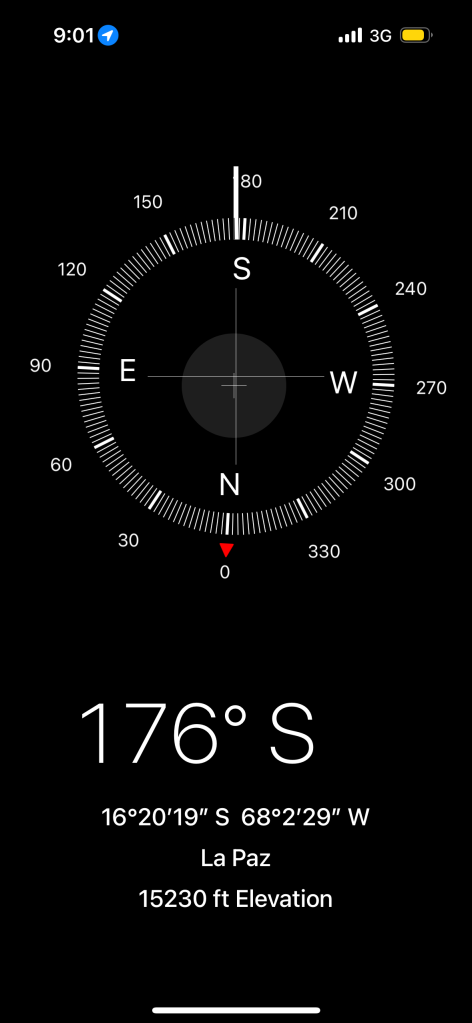
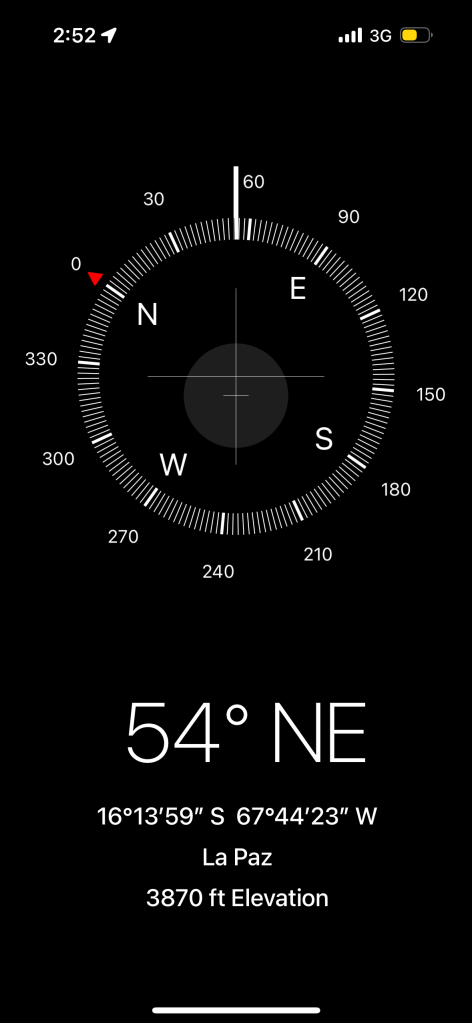
I also did a day hike to Charquini with a tour since I didn’t feel up to attempting Pico Austria (one full day hike) or Huayna Potosi (3 day tour/hike). It was high up (started at 15,560 ft & at the lagoon we were at 16,340 ft) but I surprisingly felt fine. It’s a short 1.5 hour hike (roundtrip) and while it was pretty, I think it would be better during the winter when there is a blanket of snow! I wouldn’t say it’s a can’t miss experience. Pico Austria & Huayna Potosi are more worthy of the bucket list if you are feeling up for it.
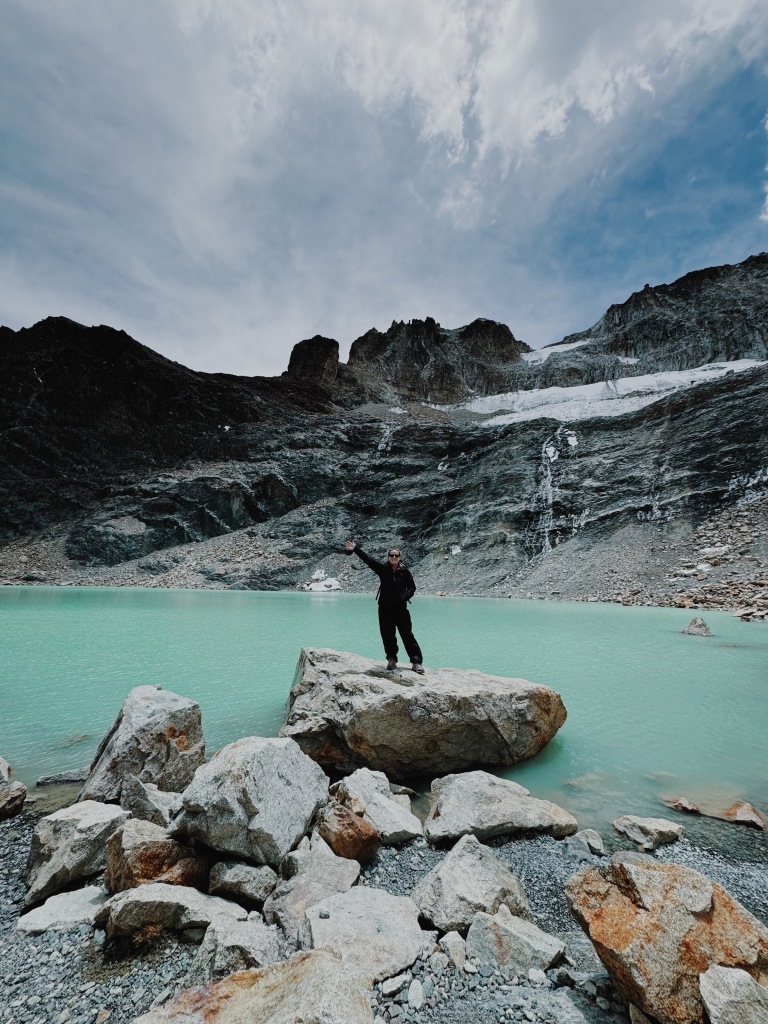
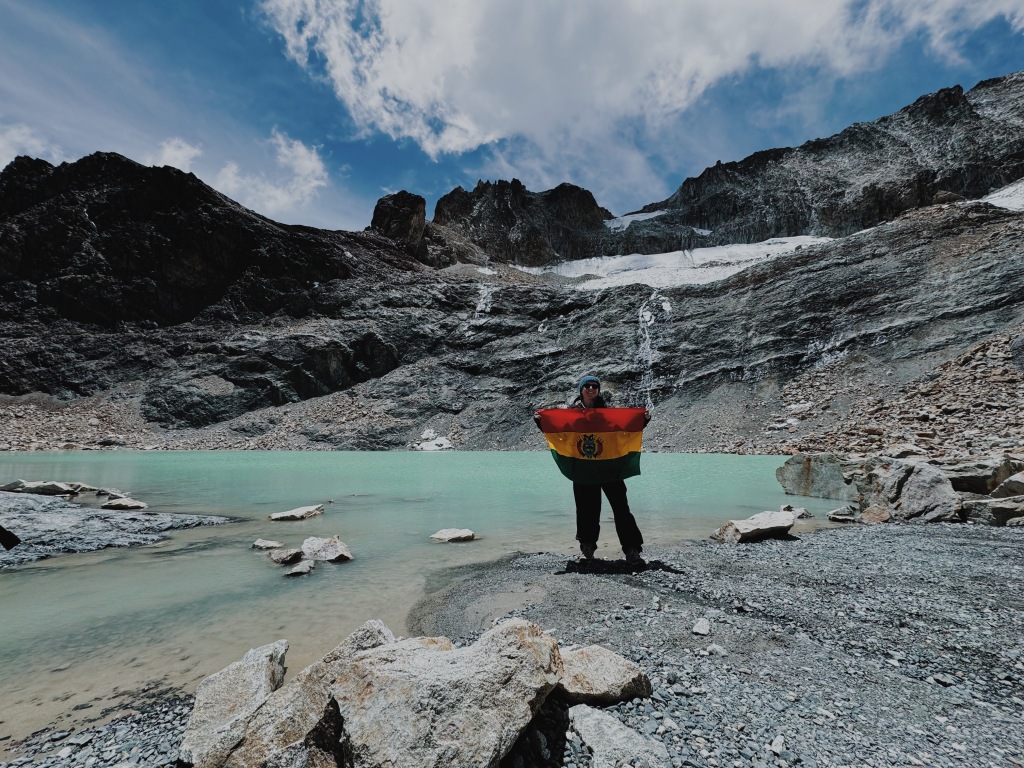
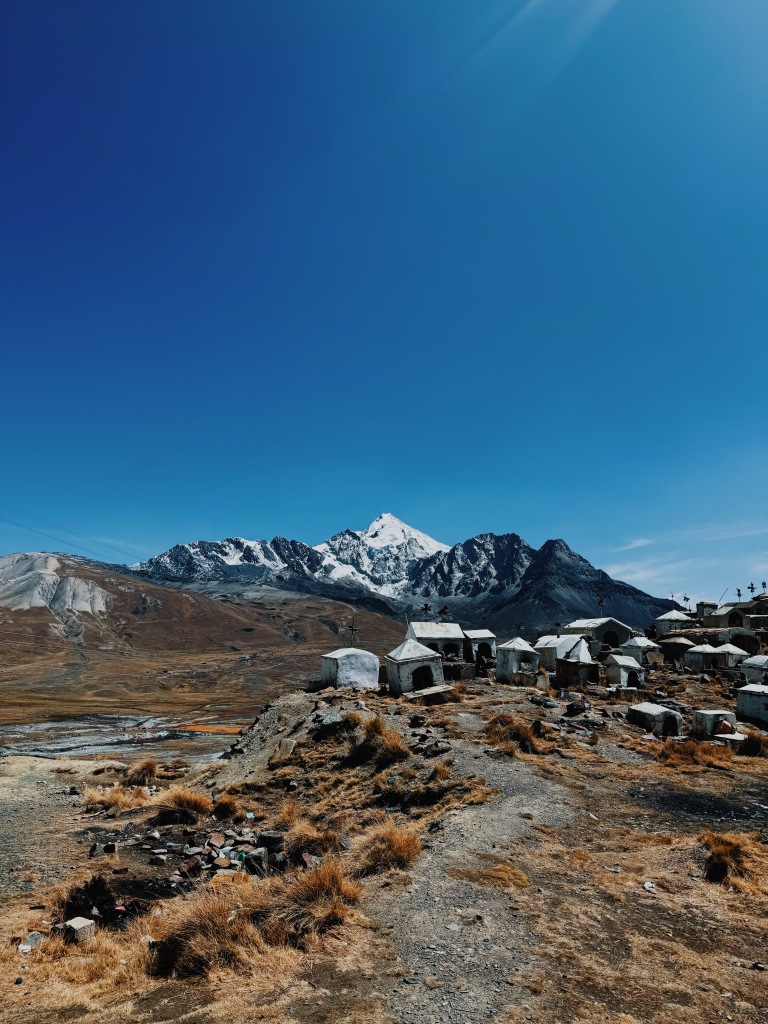
Another highlight was the spending an afternoon riding the Cable Car system around La Paz. Like Medellin, they use cable cars as a form of their public transit since the city is nestled within a valley. It cost me around $2usd to ride 4-5 different lines and I just made a huge circle around the city. It was such a fabulous way to see La Paz from a different perspective!
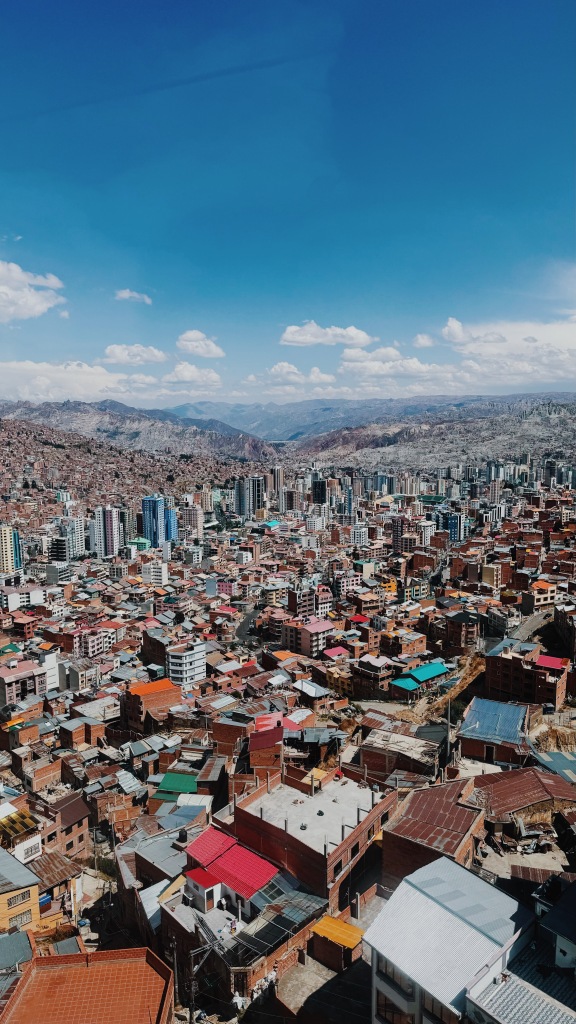

I had a self care day as well where I had my hair washed (such a backpacker luxury) and I had a massage at Spa Bolivia Home con Altura. The massage was $20 with tip and while it wasn’t the BEST massage i’ve had, for $20usd I can’t complain 🙂
Overall Thoughts:
I really enjoyed spending 9 days in La Paz, but you certainly don’t NEED that long here. The city is chaotic, more run down than Buenos Aires, but charming and the people are so friendly. I never felt unsafe here. I think 4-5 days would be a good amount (since you’ll need some time to acclimatize before jumping into all the fun activities).
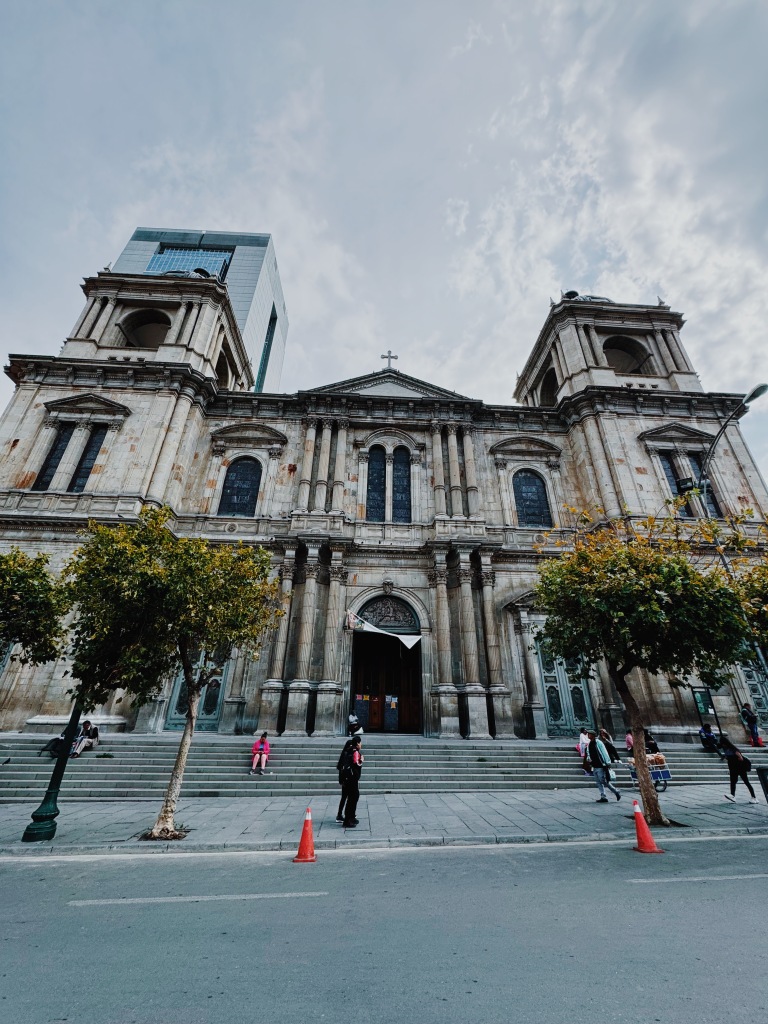


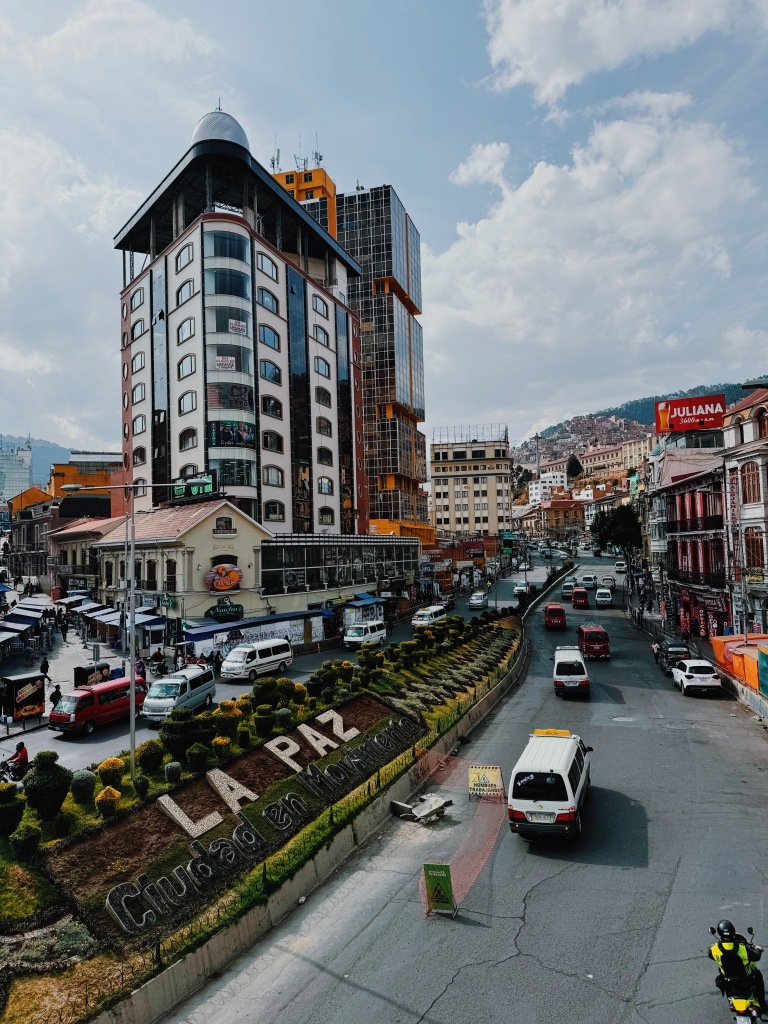
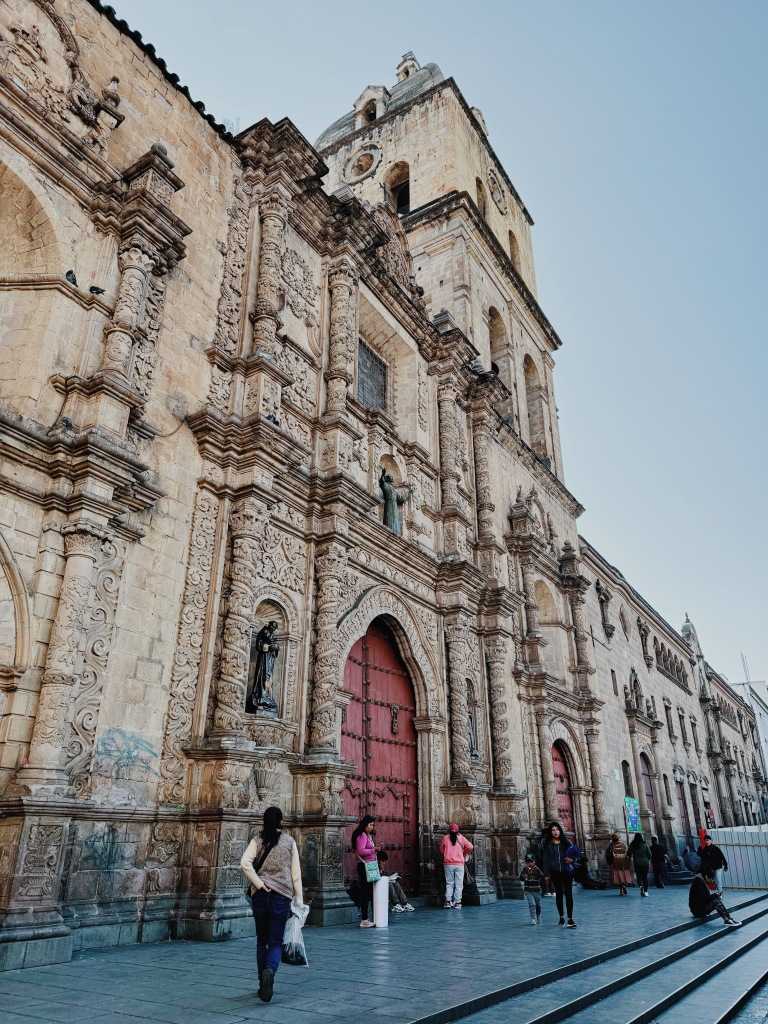
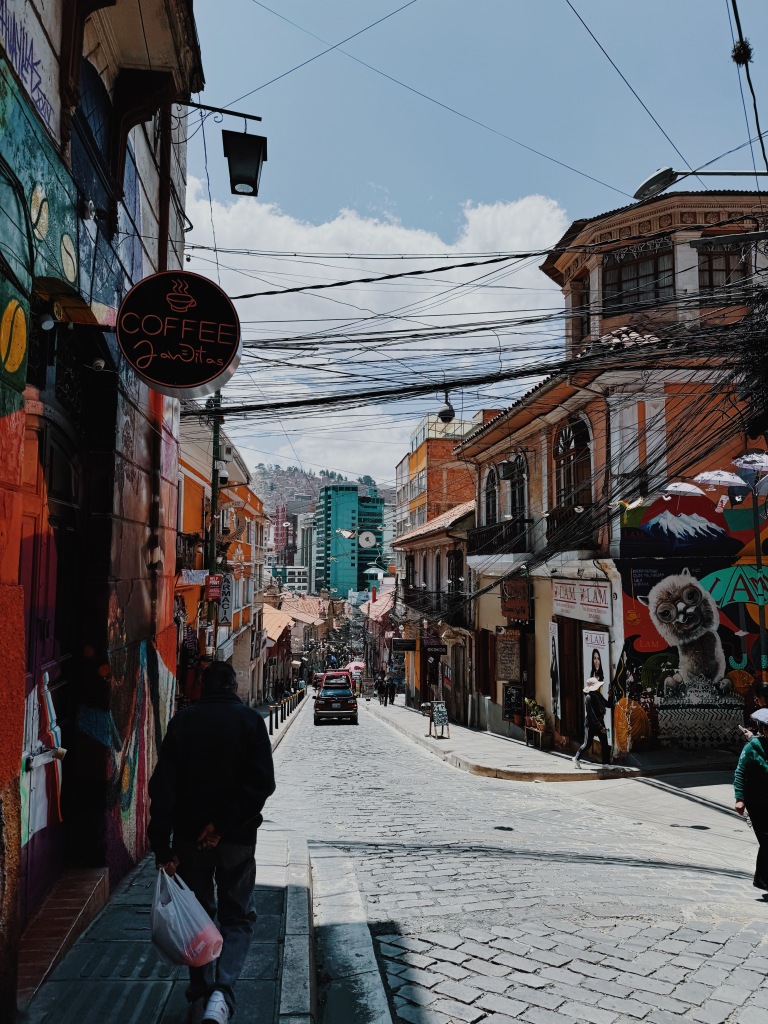
CITY: 3D/2N Uyuni Salt Flat Tour
HOW LONG: 2 NIGHTS
Accommodation:
The first night we stayed in a hotel made from salt, which was pretty cool! It was still quite basic, but we slept well after the first day of activities. Showers cost around $2USD. Wifi also cost extra. I enjoyed being unplugged and playing cards with one of the women from my group.
The second night we slept way high up (~14,500 ft), and it was COLD. I think I wore 3 layers to bed and I was still chilly. VERY basic accommodation, no heating (obviously), no shower, and paid wifi. We had dinner and breakfast here and it wasn’t executed as well as the first night, but we were in the middle of nowhere, so we just tried to embraced the experience 🙂
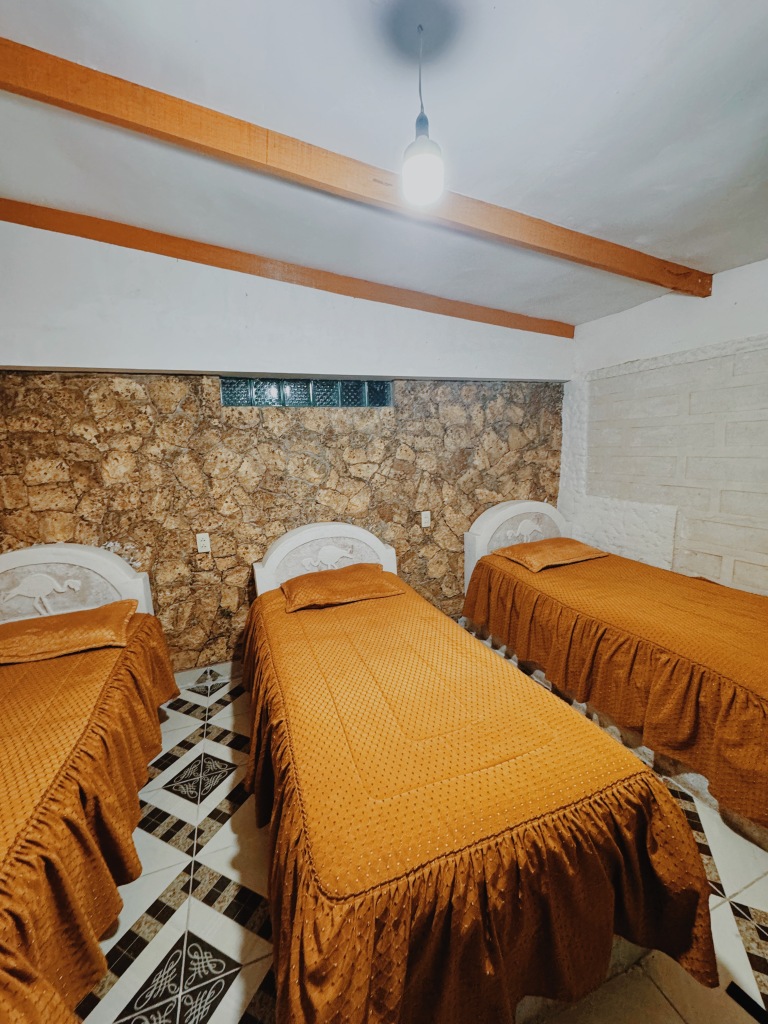
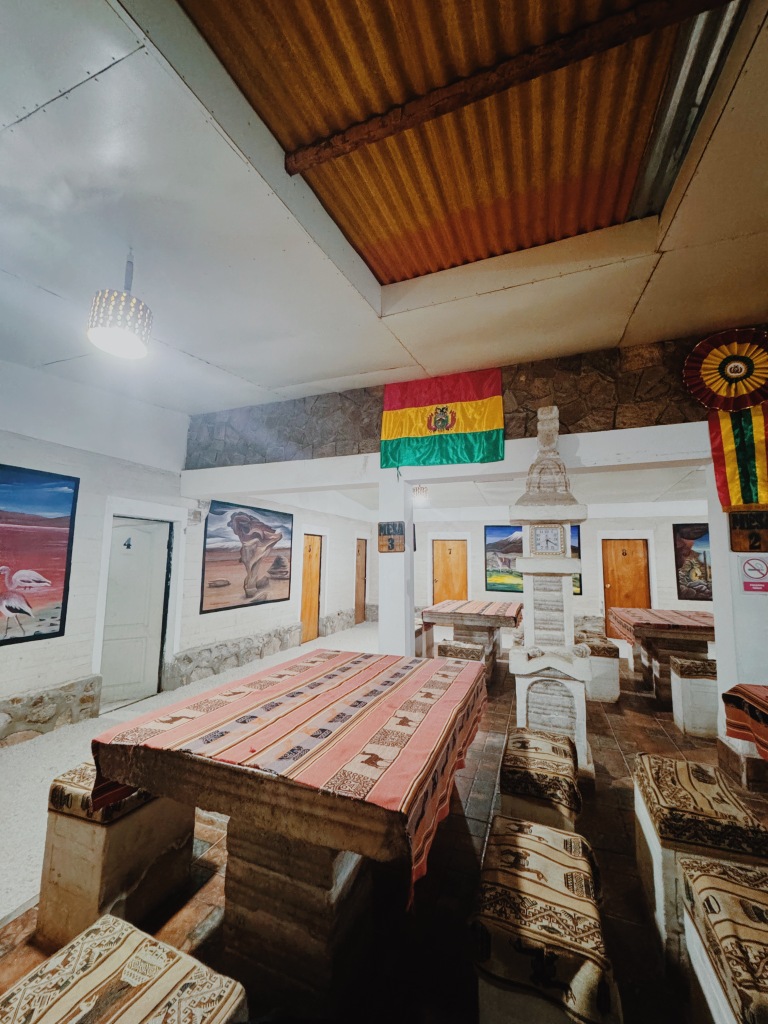
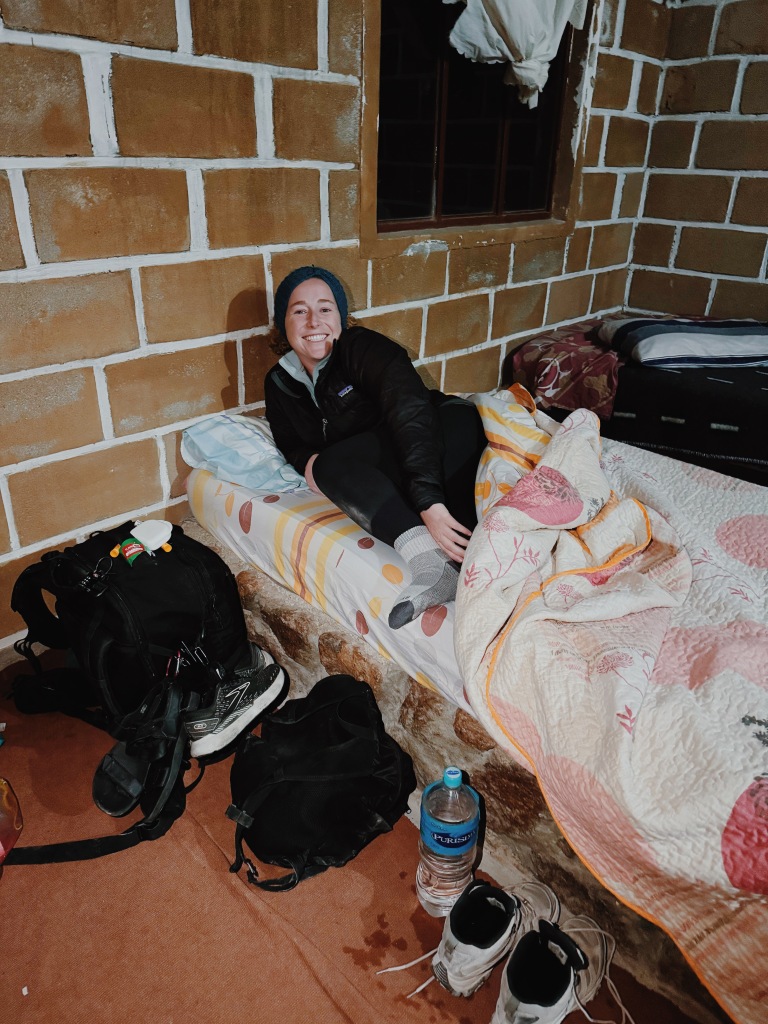
Where to Eat:
Obviously the tour provides all the food so not many choices to be made. Overall the food was decent and we didn’t go hungry. I would recommend bringing a few snacks in the car in case you need a chocolate pick me up (as I always do 🙂 )

What to Do:
You cover a lot of ground over the 3 day tour:
Day 1 is focused on the Salt Flats. You do start with the train graveyard where there are a lot of old trains. We also visited a town where they process a lot of the salt. Then we were off the to the Salt Flats itself. This was the highlight for me for sure! Such an incredible landscape that I’ve never experienced before. You could spin 360 degrees and all you could see was salt & the blue skies. Remarkable! We also visited the Isla Incahuasi – an island that used to be an underwater volcano. There’s volcanic rock and coral remaining and now a bunch of cacti live there. They are huge!
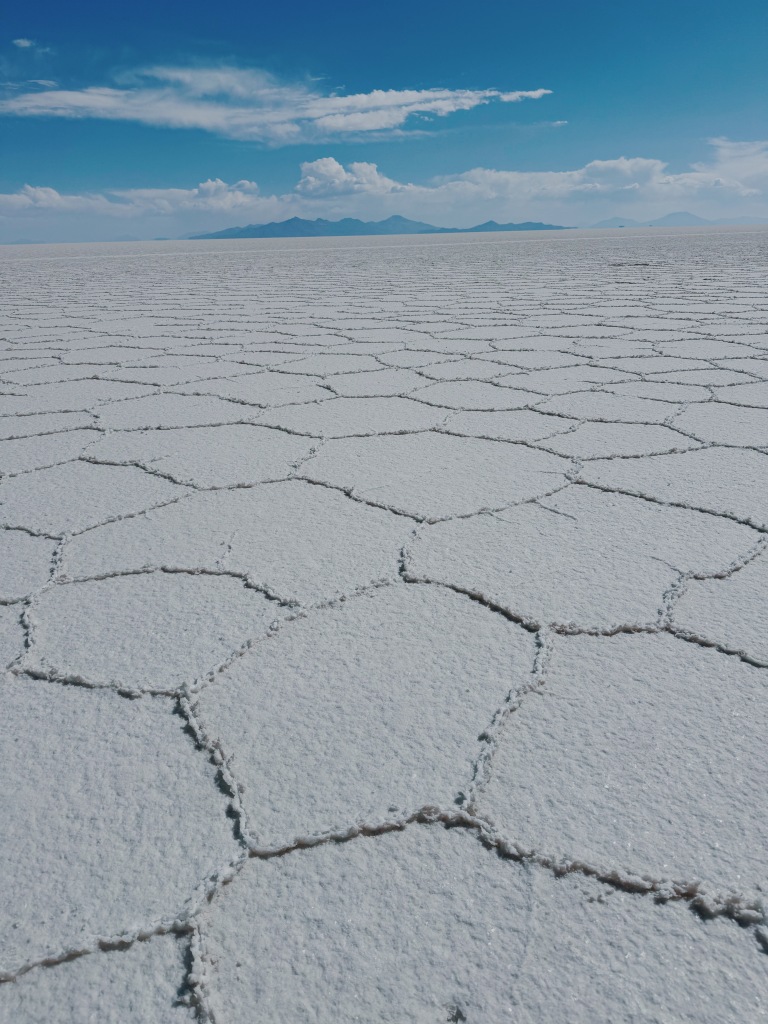
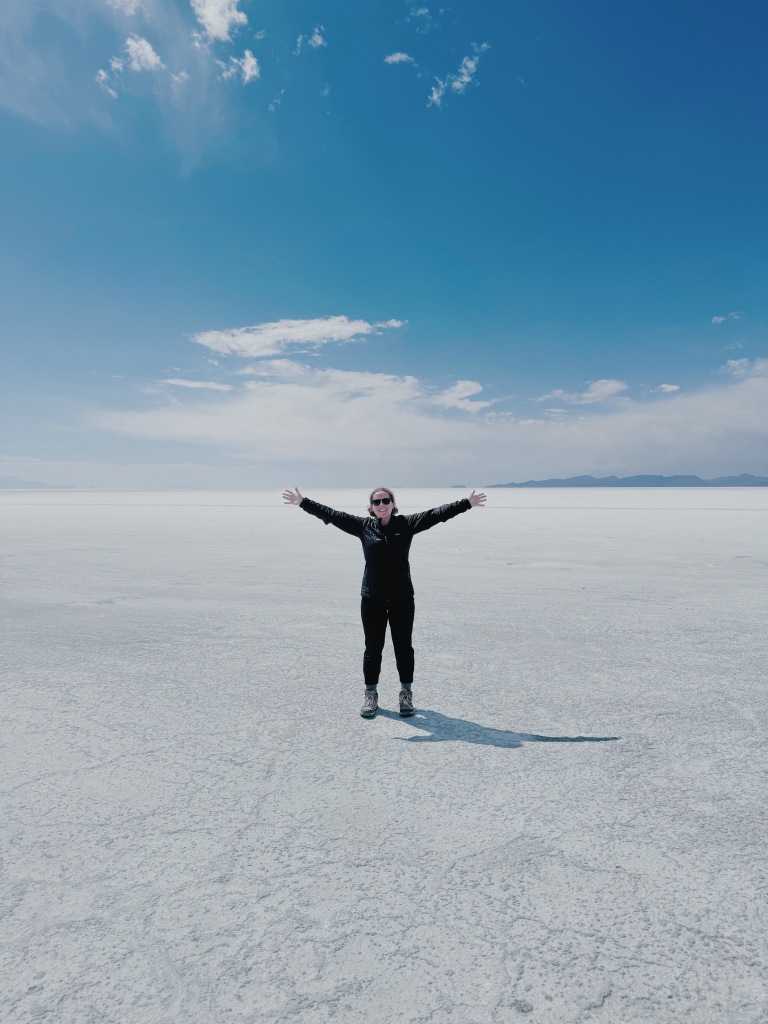
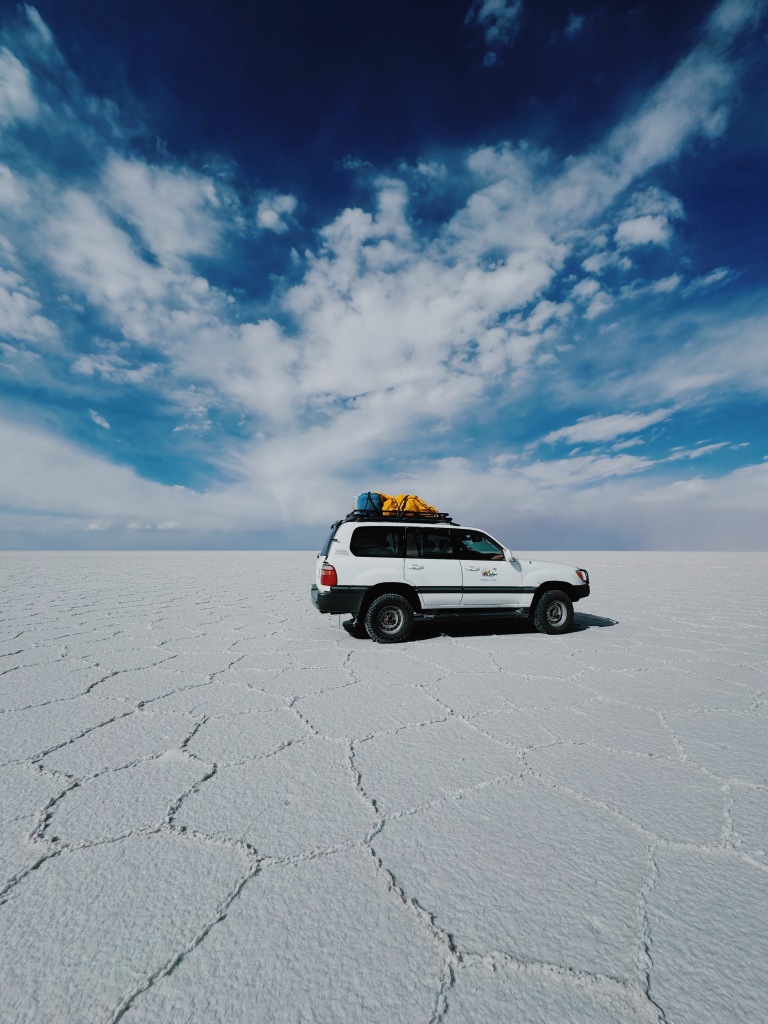
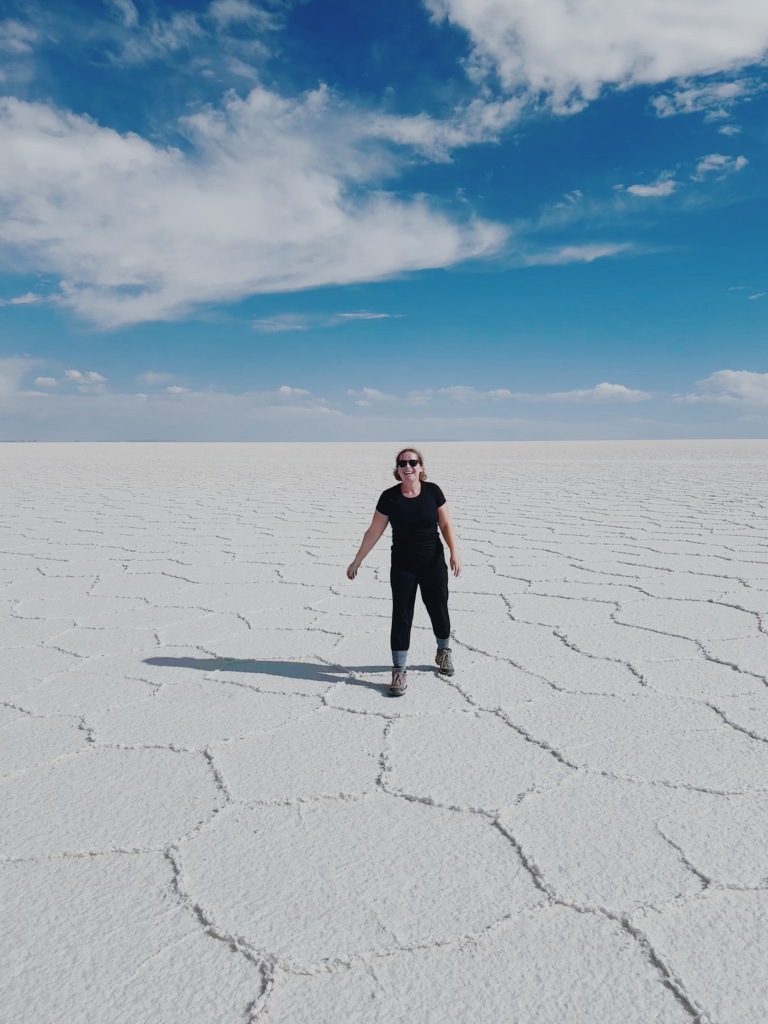
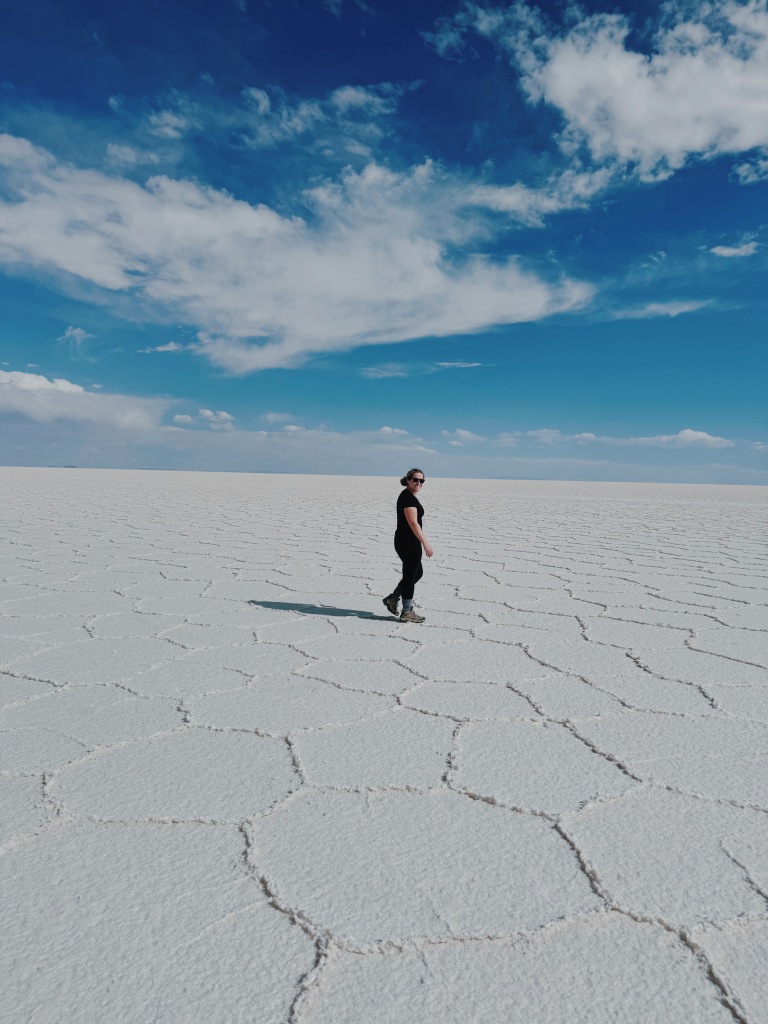
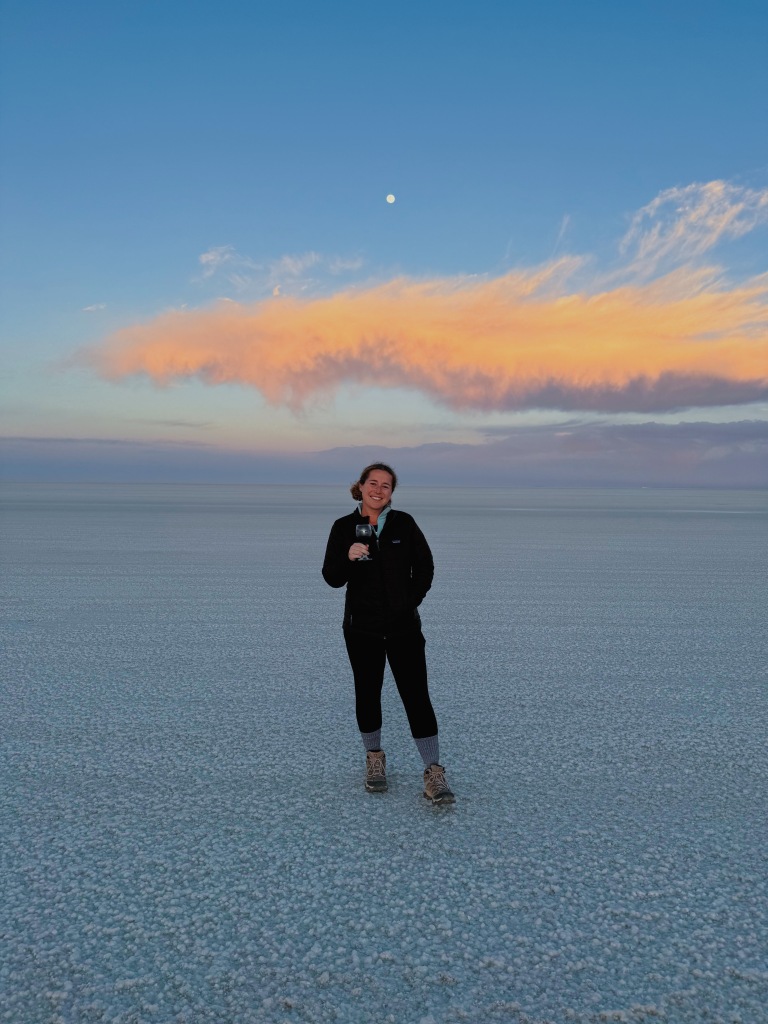
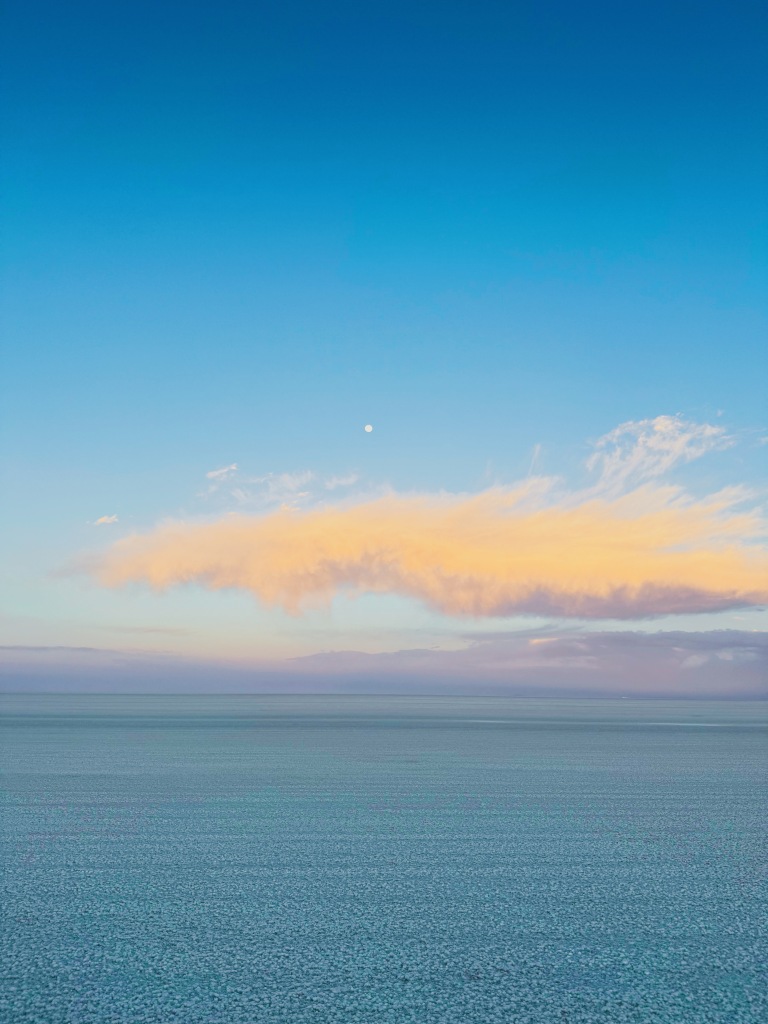

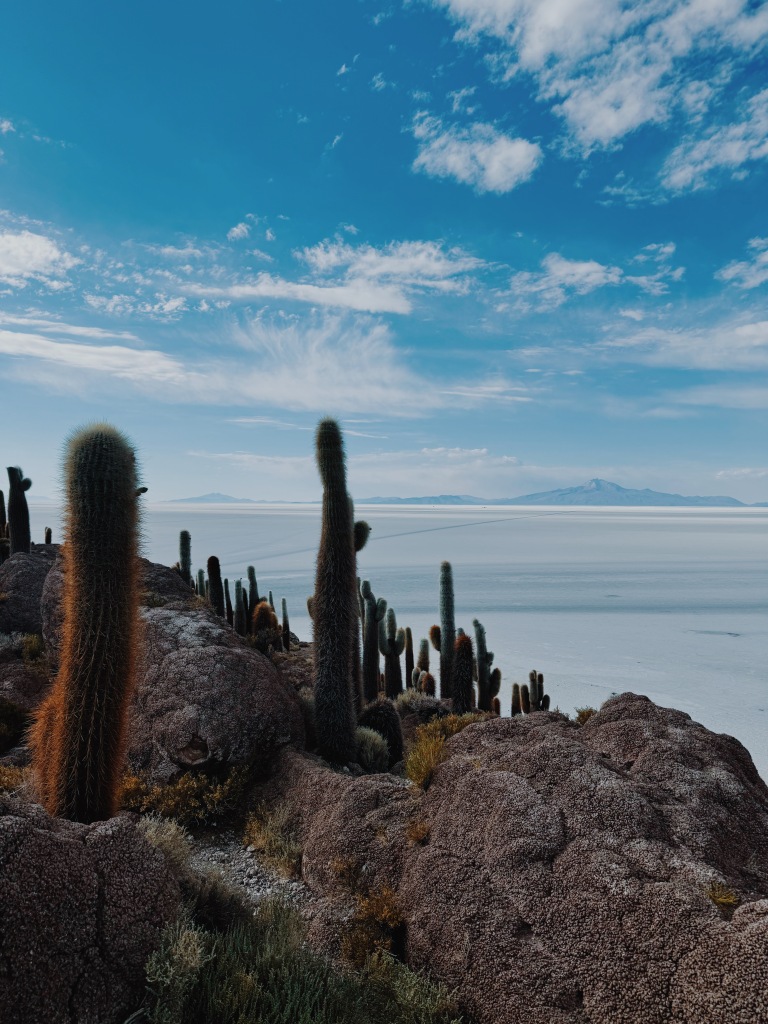
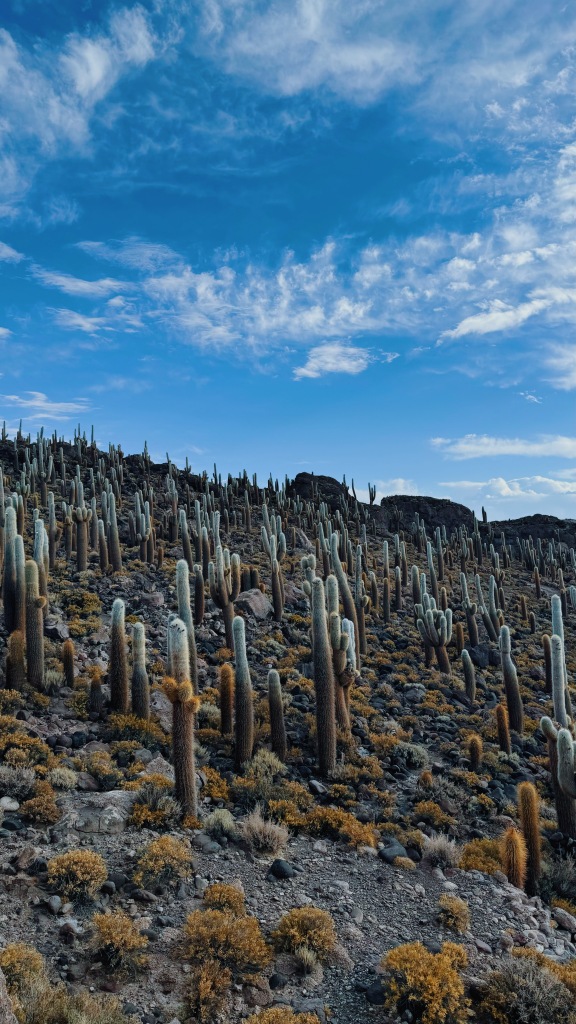
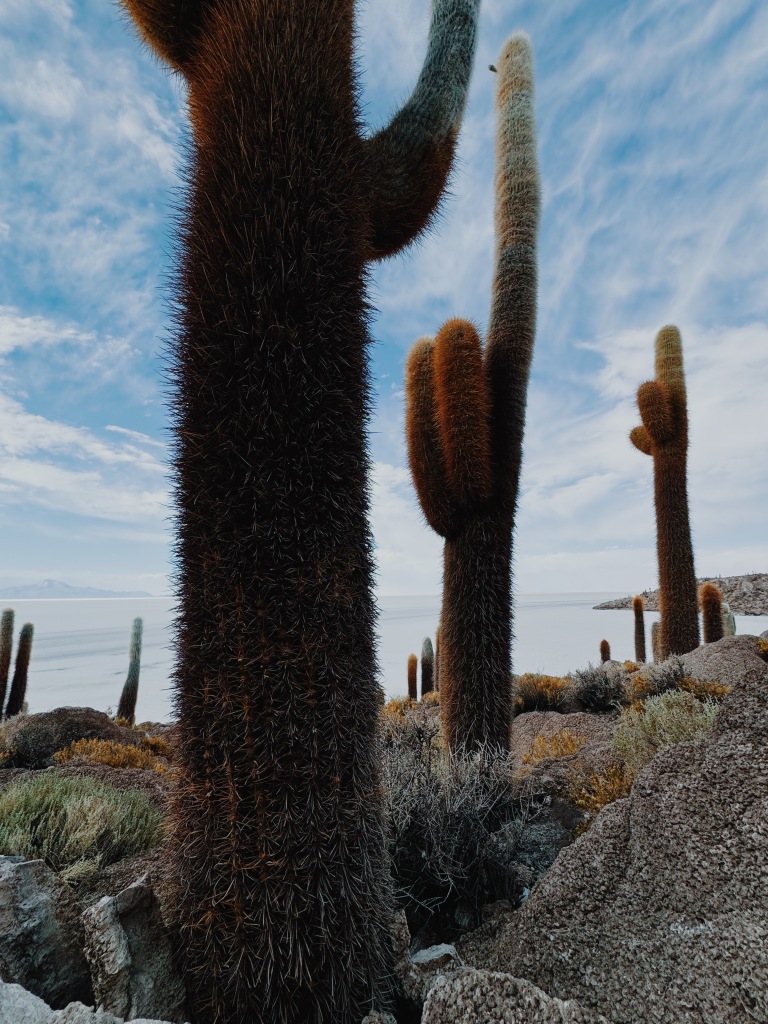

You get a chance to take lots of fun, silly photos that mess with perspective! The guides are usually pros at this (but ours was only alright, unfortunately).
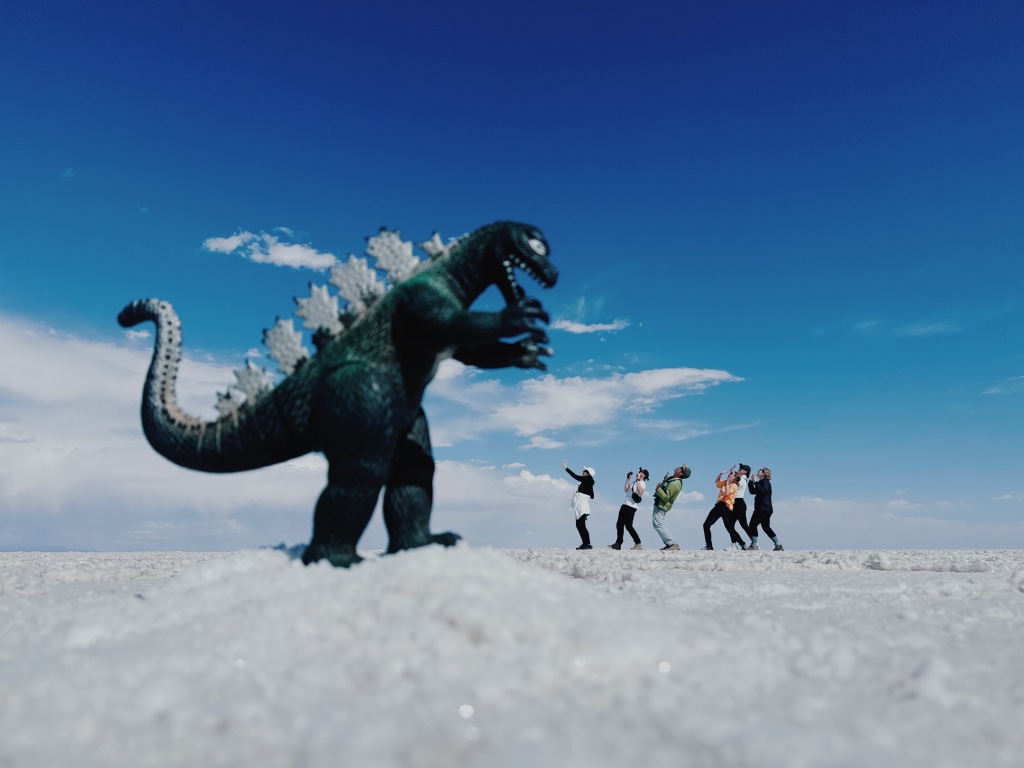
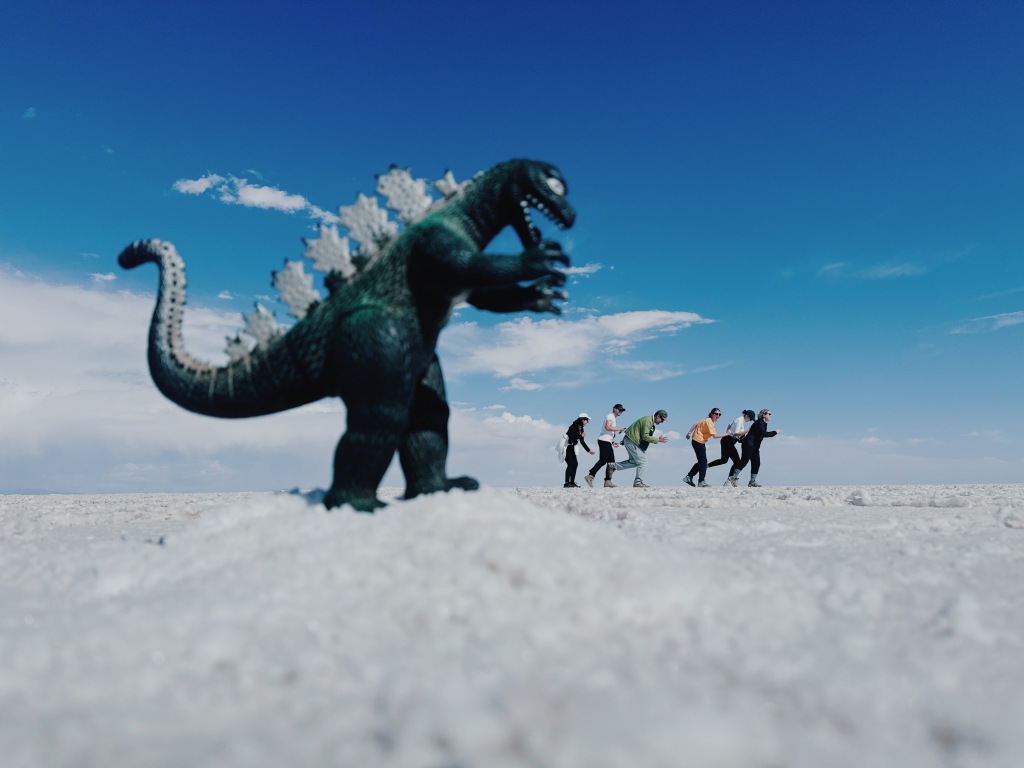
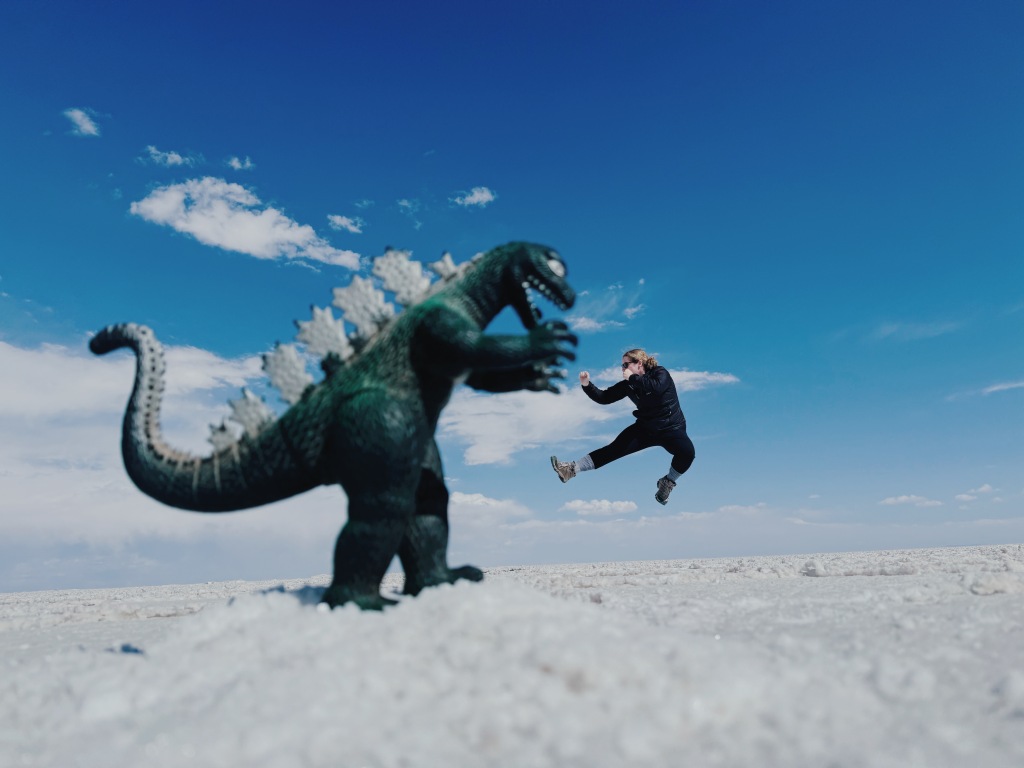
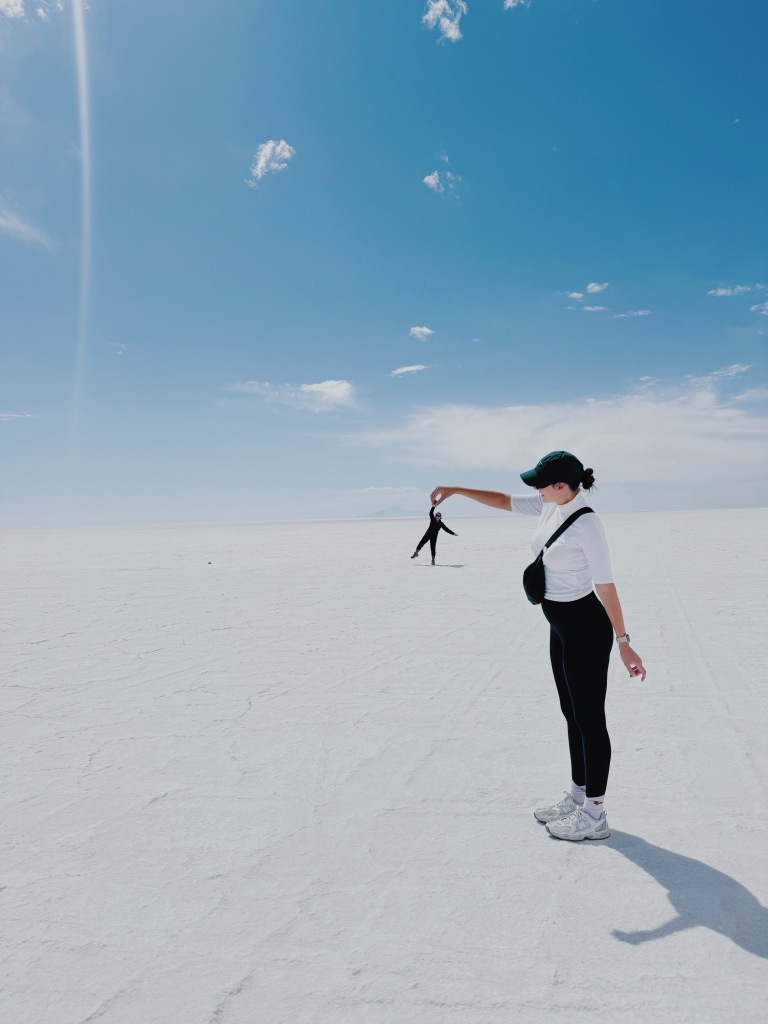
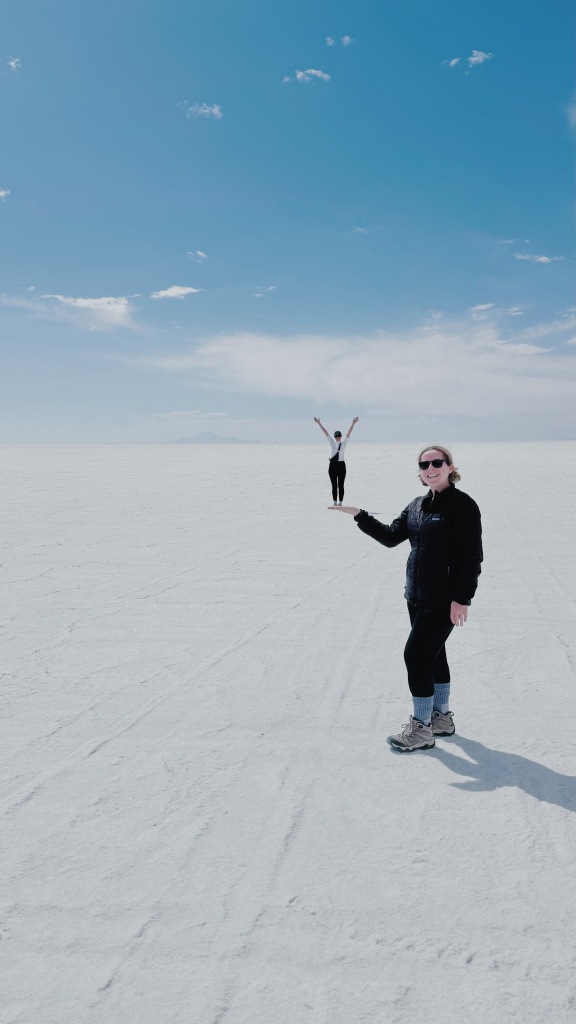
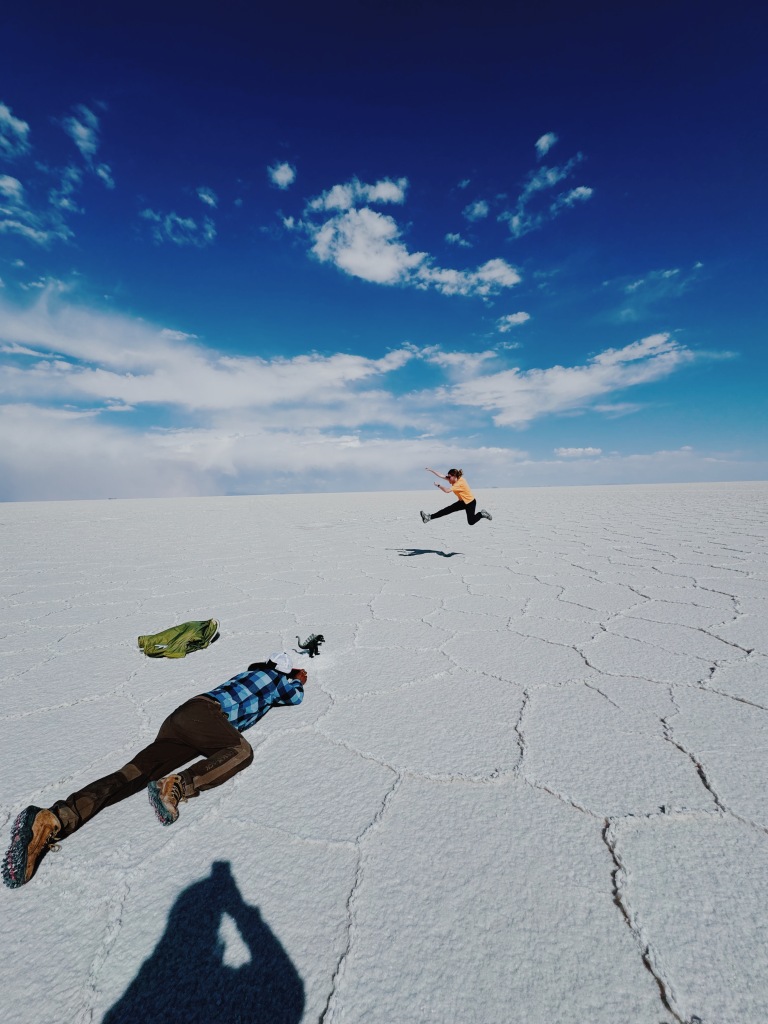
Day 2 is focused on lagoons and the desert. This was still pretty cool, but I definitely preferred day 1. We saw lots of flamingos, llamas and even a desert fox! We had a picnic lunch where all the Viscacha, while technically a part of the chinchilla family, they resemble rabbits, joined us. They were happy to take any of the carrots we dropped. We reached over 16,000 feet (which I think is the highest elevation I’ve ever been to!). We visited some geysers before arriving to our accommodation. The thermal hot springs were an option but I was honestly too cold to think about getting wet without access to a hot shower afterwards

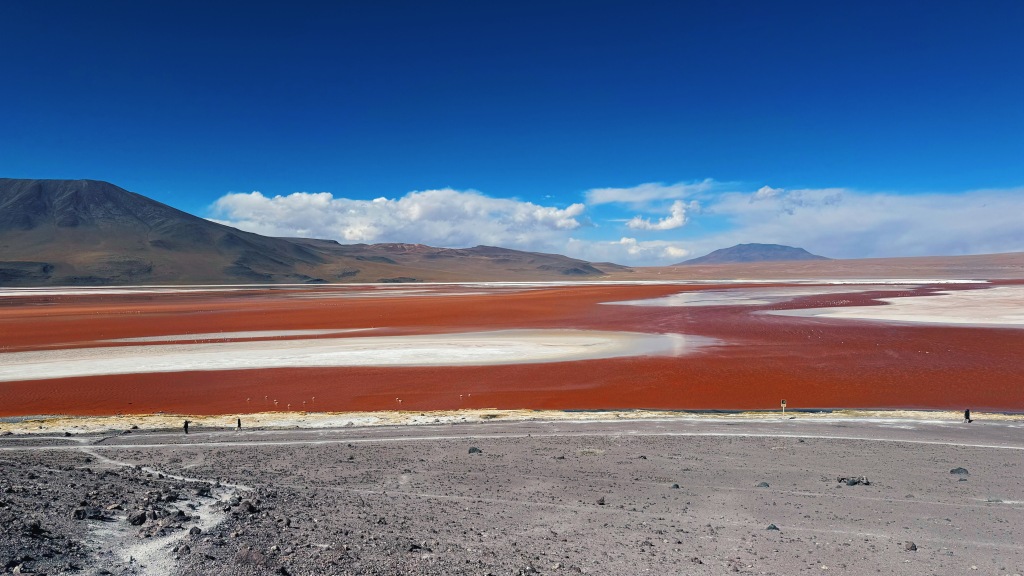
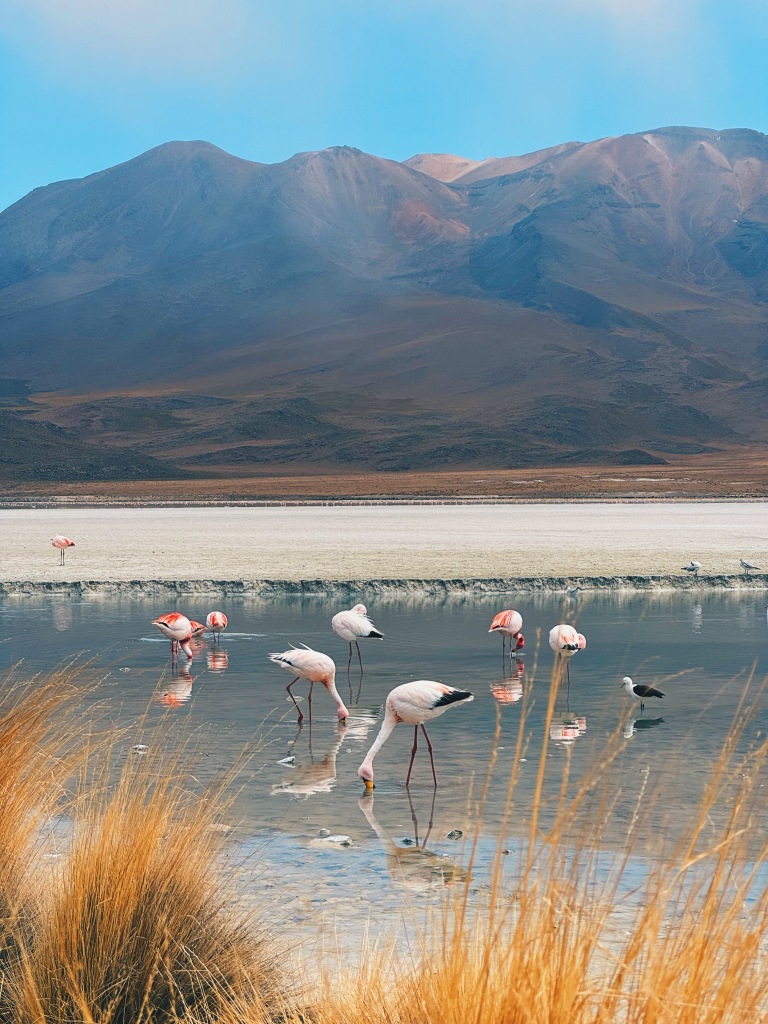
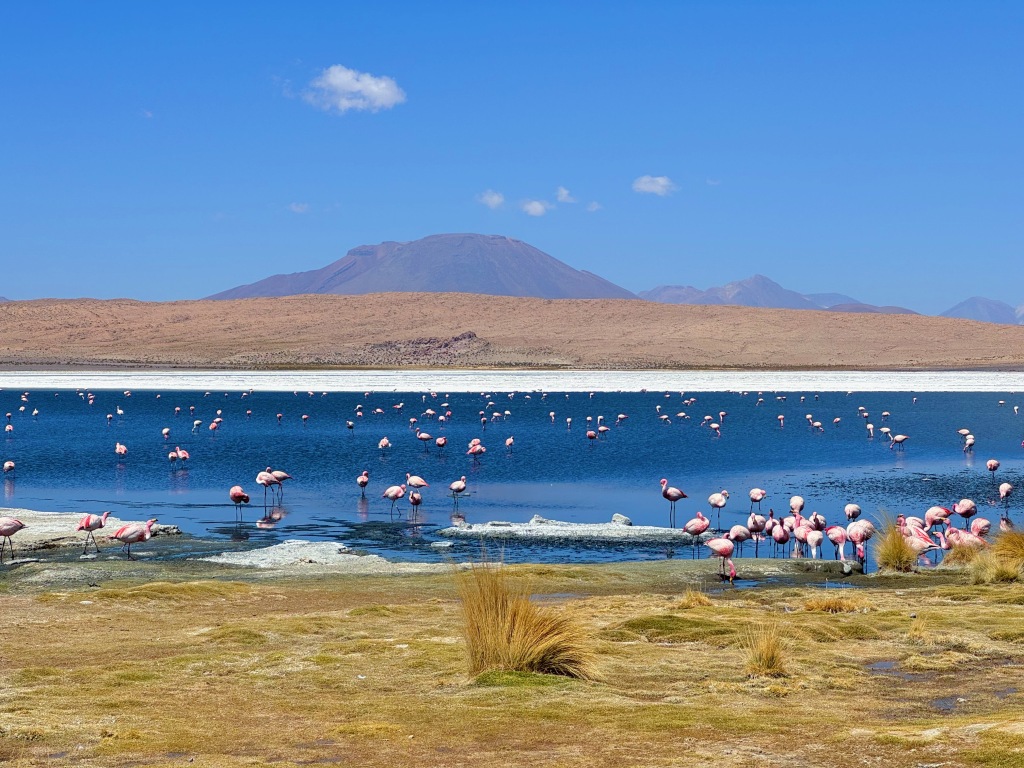
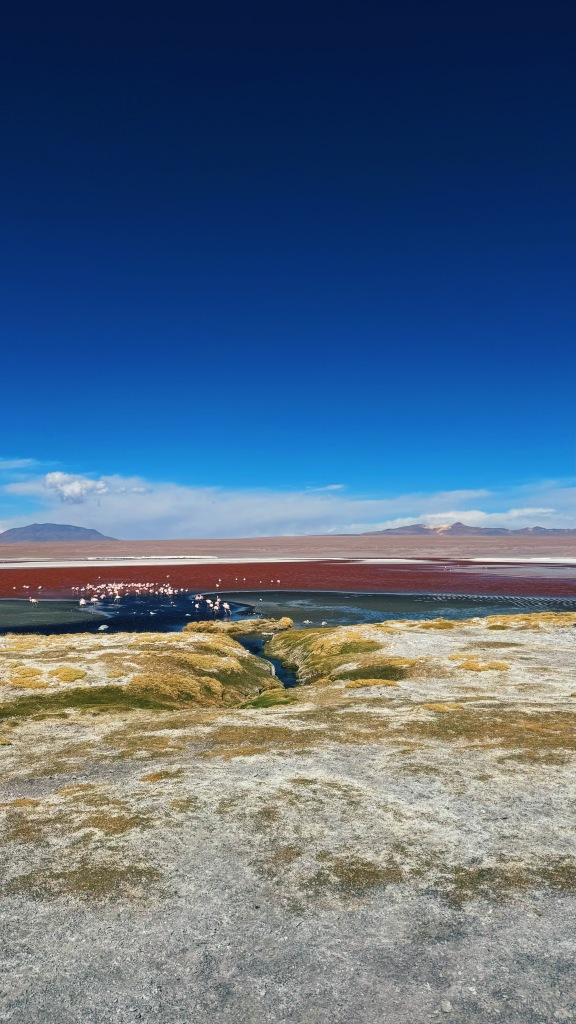
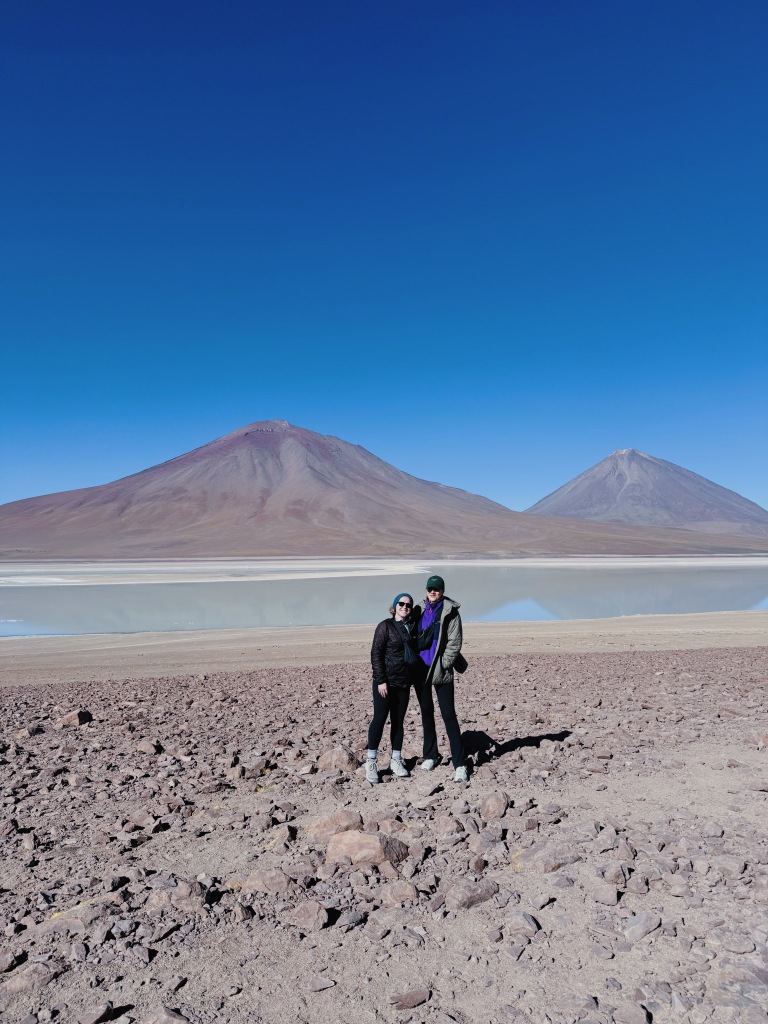
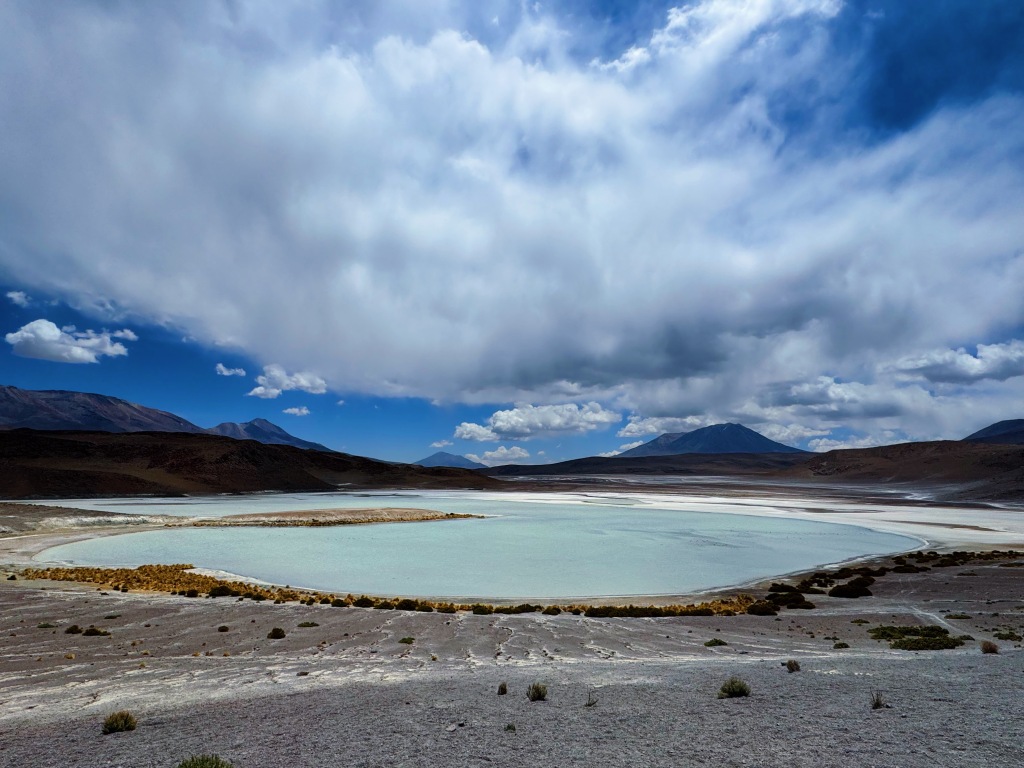
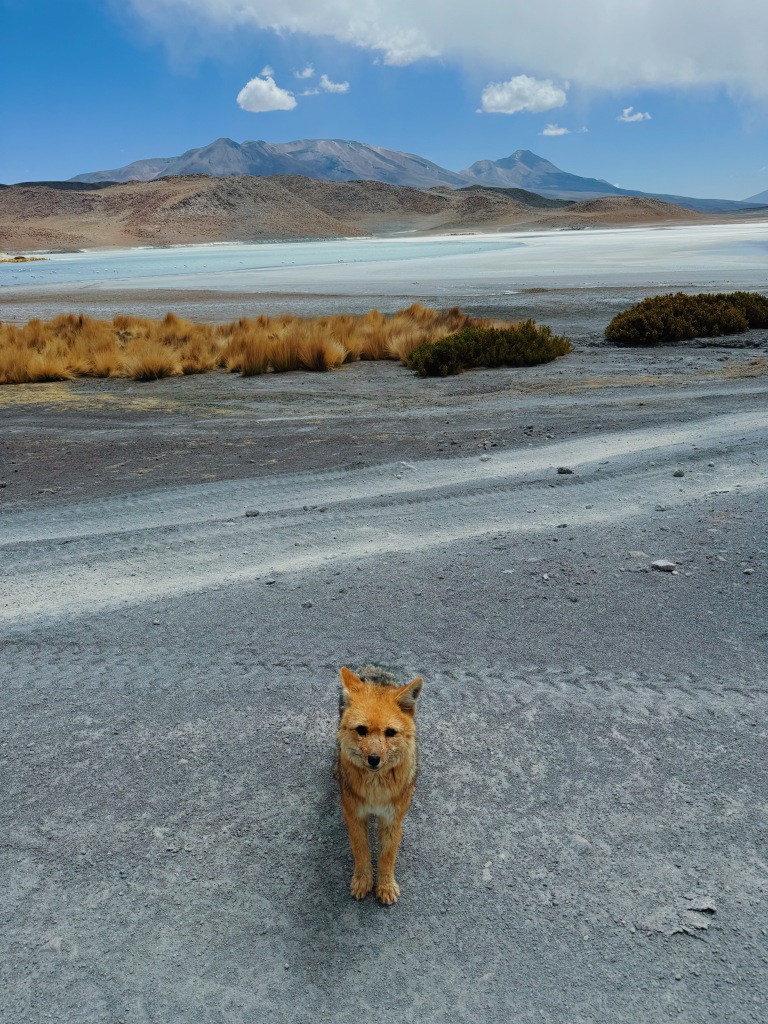
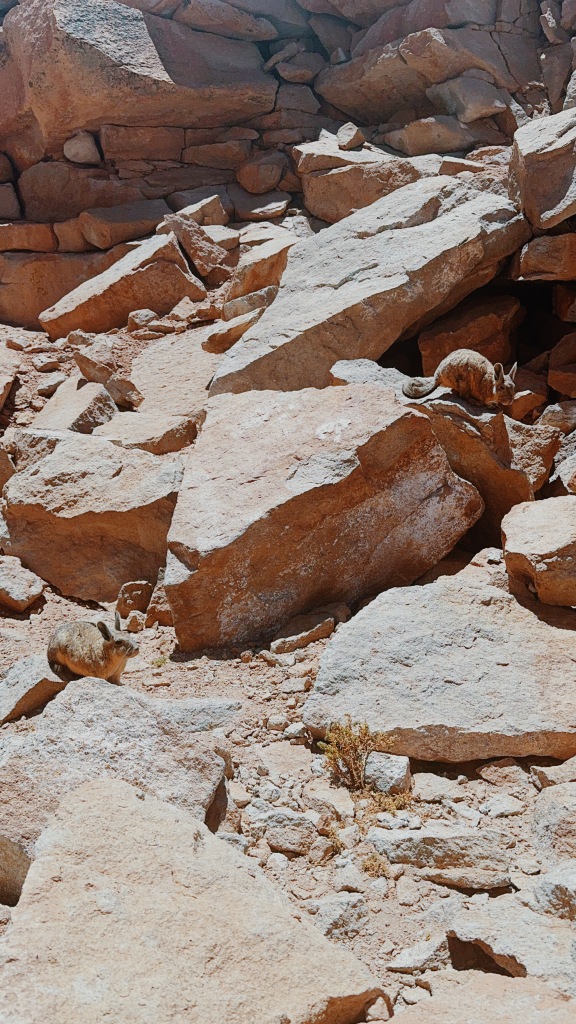
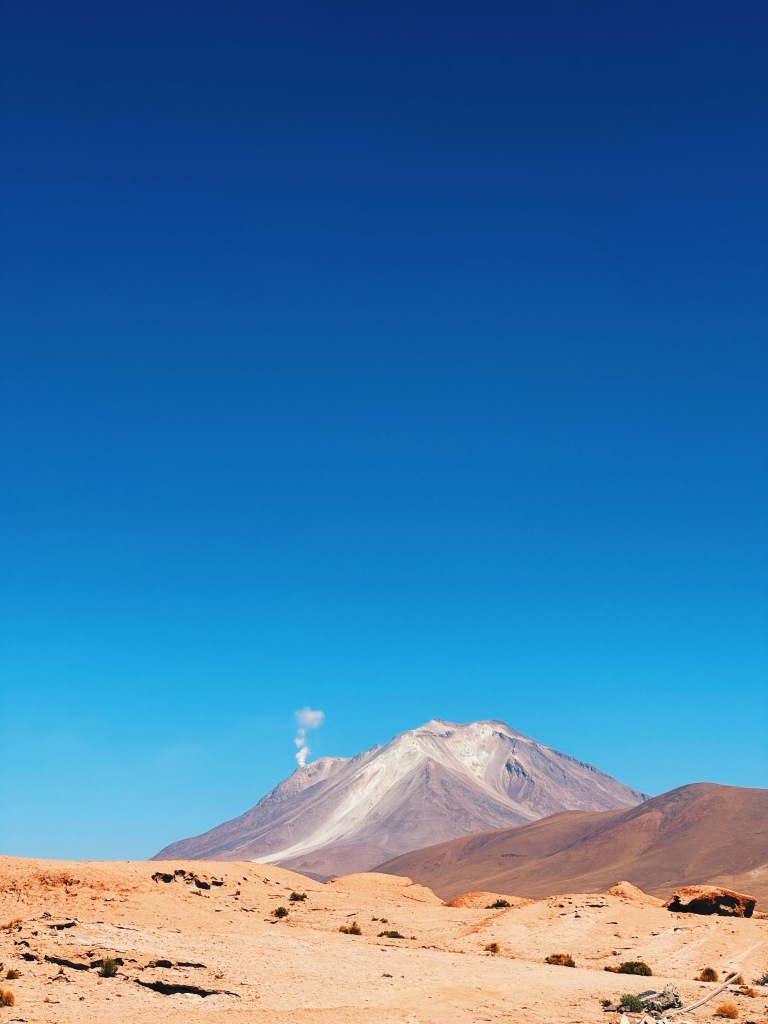
Day 3 was actually not a full day at all. The folks who were heading to Chile were dropped off at the border crossing around 9:30am after seeing some more lagoons. The rest had a very long drive back to Uyuni where the tour began. They then would hop onto another night bus back to La Paz. I was very grateful I only had an hour drive to Atacama ahead of me. The border crossing was very smooth and the tour guide got me settled onto the bus to Atacama. Now time to sleep 🙂
Overall Thoughts:
I always get so tired/burned out from these types of tours but they are incredibly efficient and you sorta just have to do it haha. Usually you meet some great people and see some cool sights. I didn’t love my group except one German girl. Also, it’s very hit or miss whether you get a good guide, so if you are lucky you’ll get one who takes awesome/creative photos/videos in the flats, or you’ll get one like mine who was just alright. Not much you can do about it. Overall, I’d highly recommend doing a tour of the Salt Flats. Also it was great because it got me to my next destination: the Atacama Desert in Chile.
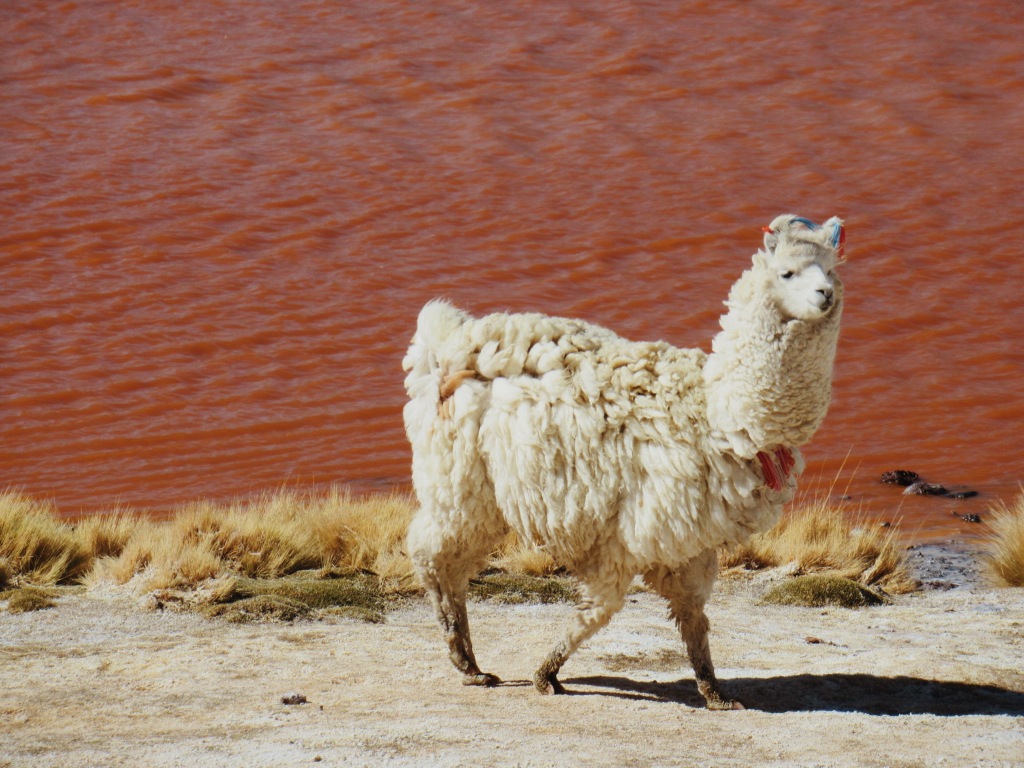
BUDGET FOR 12 DAYS IN BOLIVIA:
WOW was Bolivia affordable 🙂
Accommodation: $80 ($8.90 per night) – This is slightly skewed because I had one overnight bus (aka $0 for accommodation) + my 2 nights on the Salt flat tour were accounted for in my activity cost.
Food: $105
Groceries: $9
Activities: $260 – includes Hike tour ($15), Death road ($45), & 3 days Uyuni Tour ($148)
Health: $60 – includes Massage ($20), doctor visit ($38), & hair wash ($15)
Local Transportation: $17
Visa- $160
Total: $691 (Daily average: $57) (without visa, daily spend was $44)
Transportation to next destination: $0 (bus to Chile was included in my Salt Flat tour!!!)

